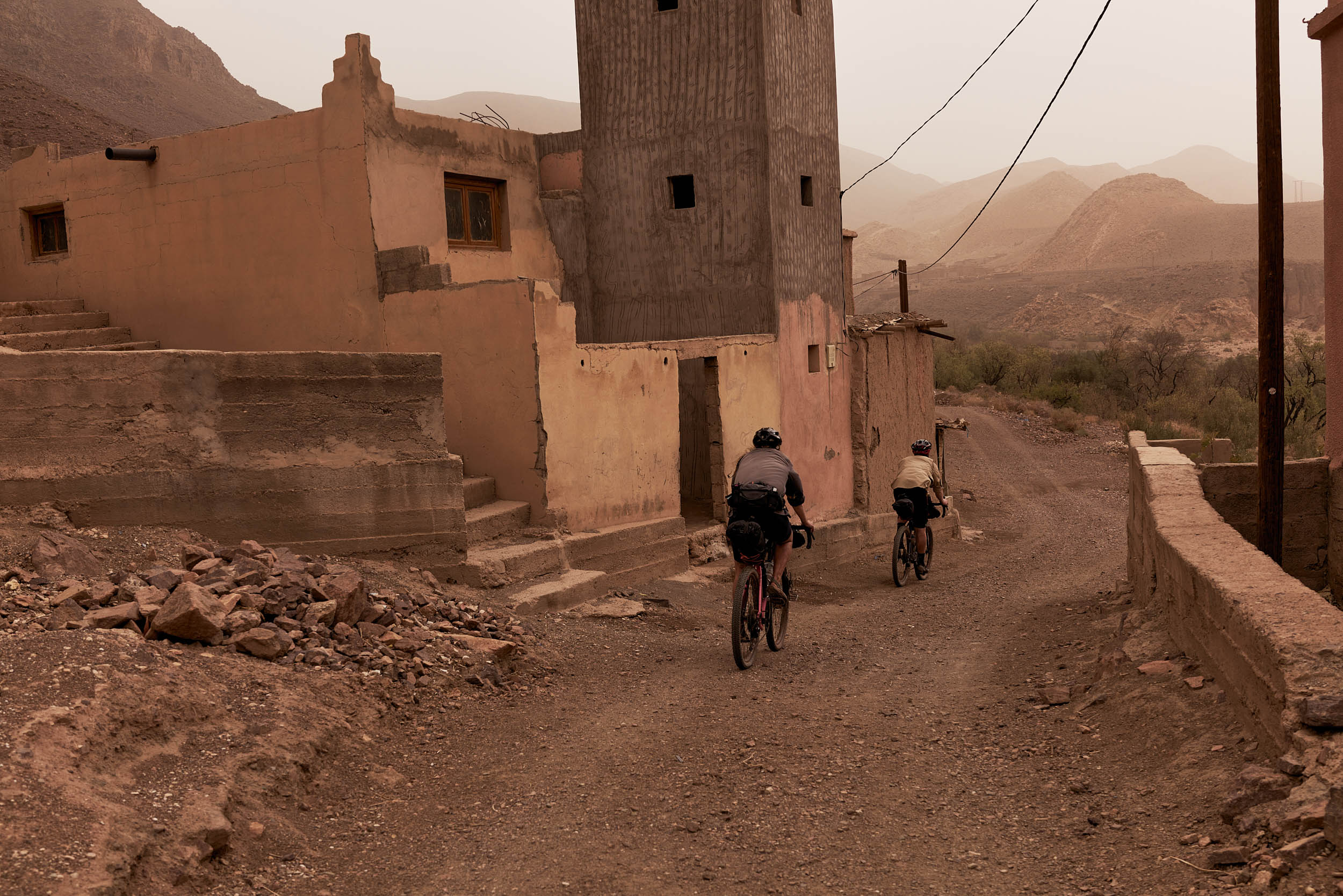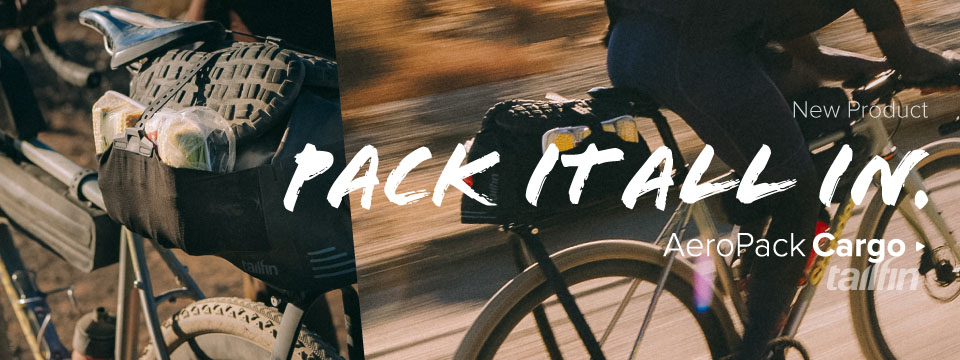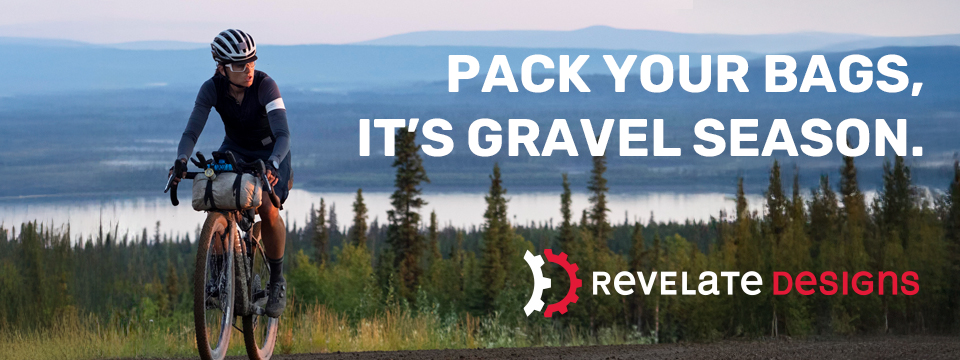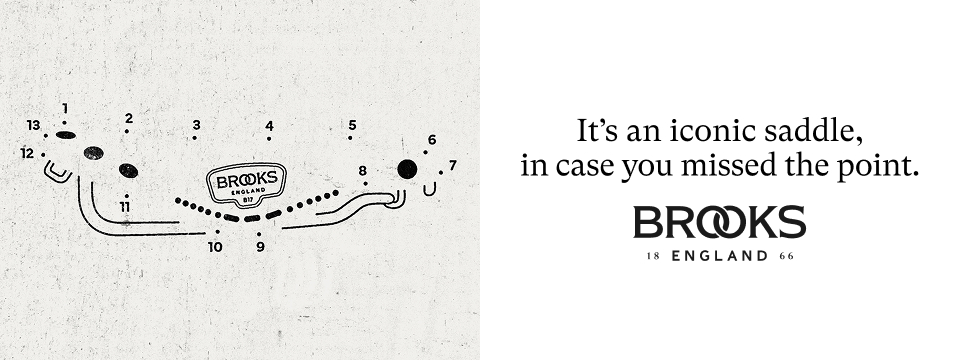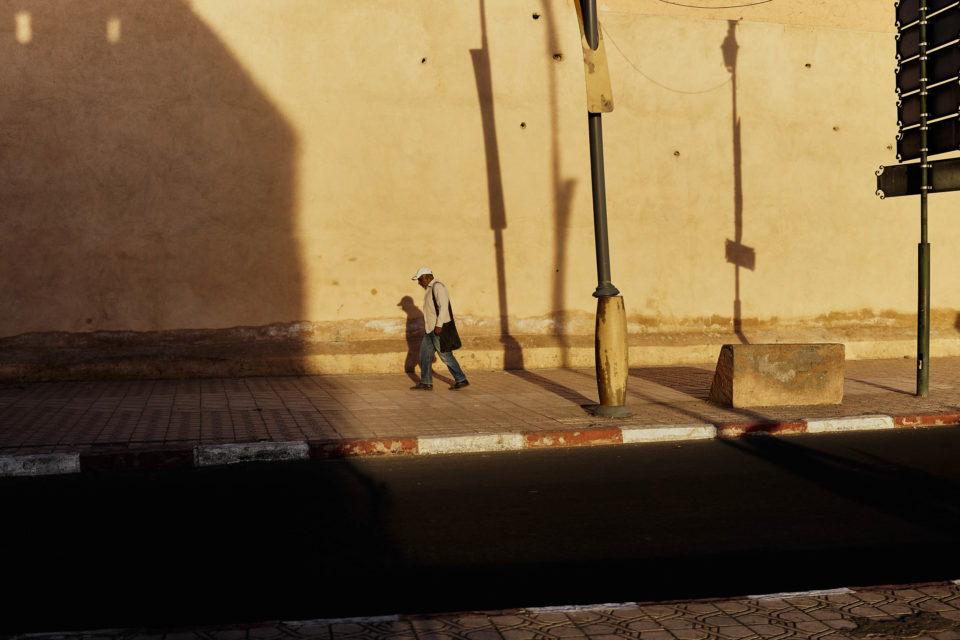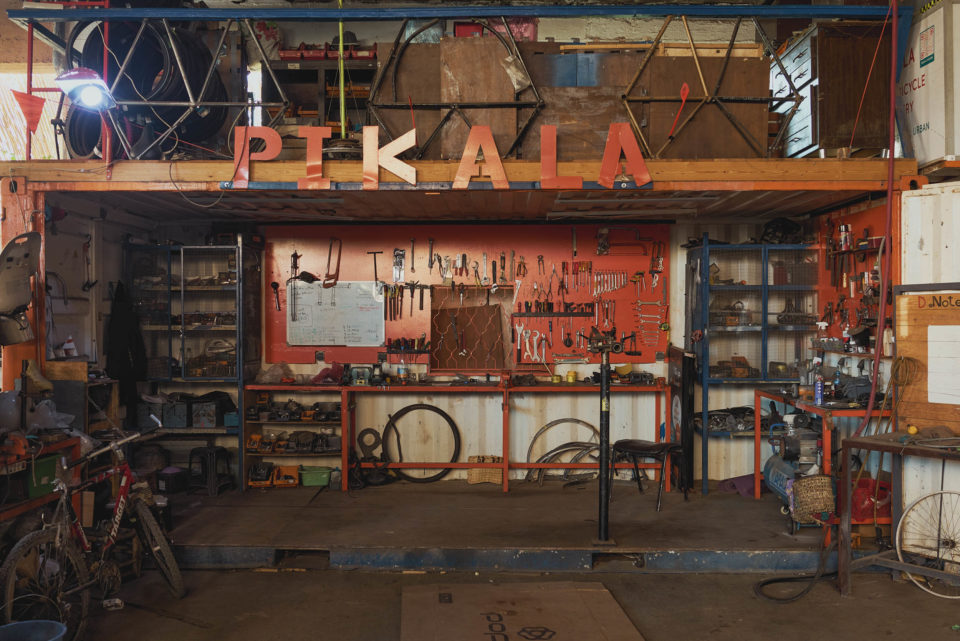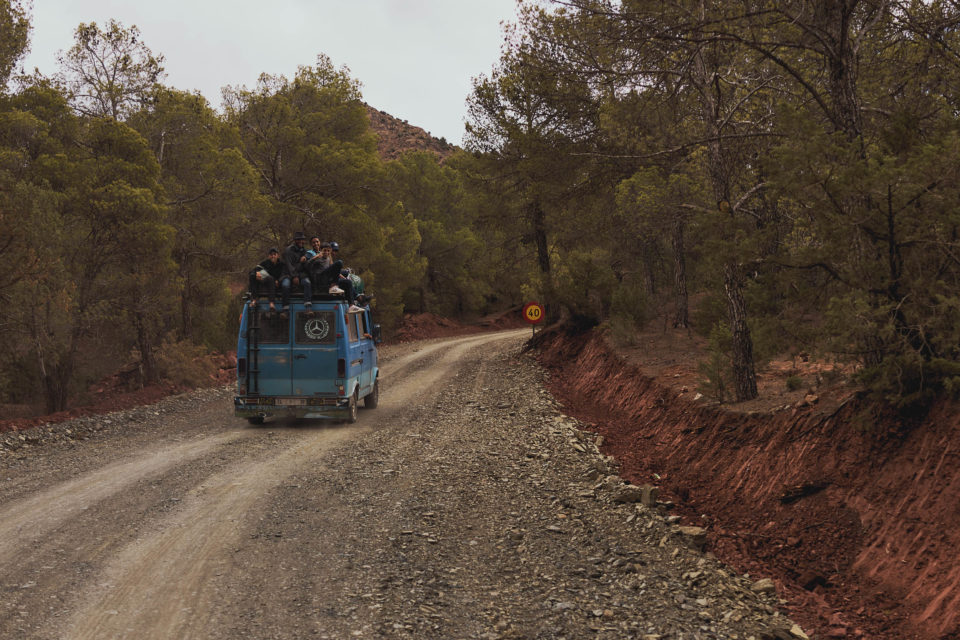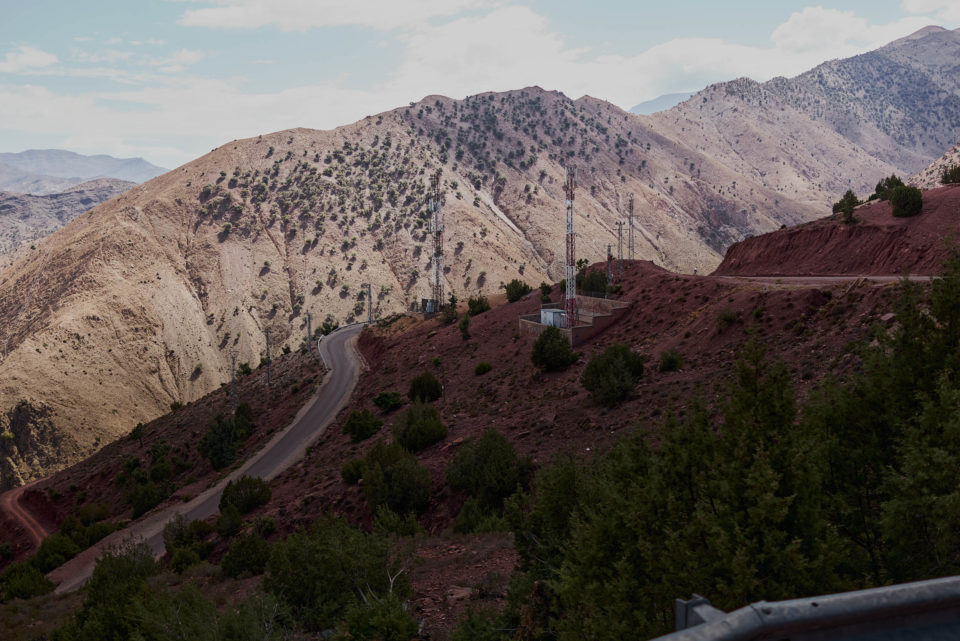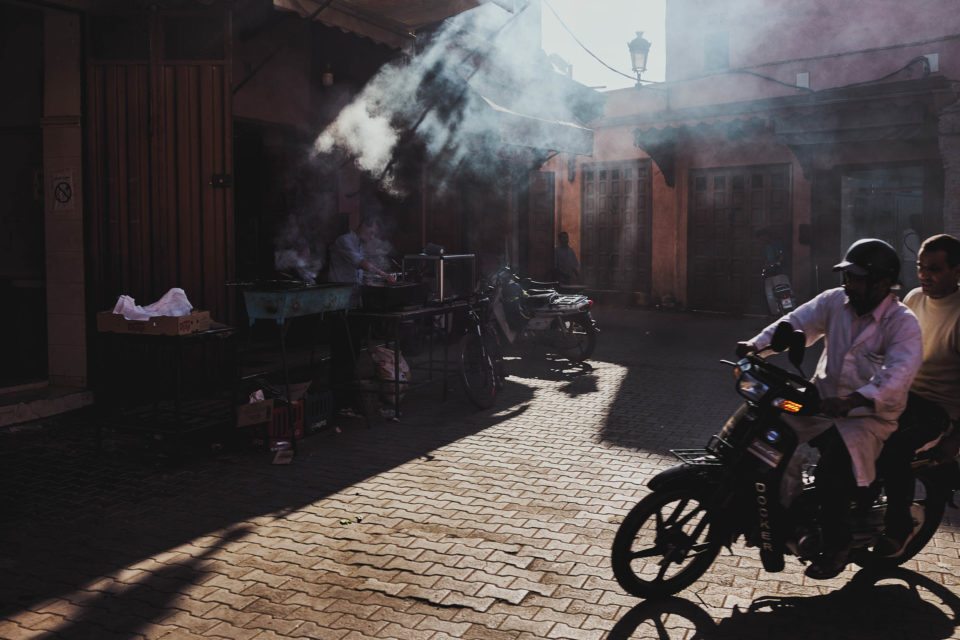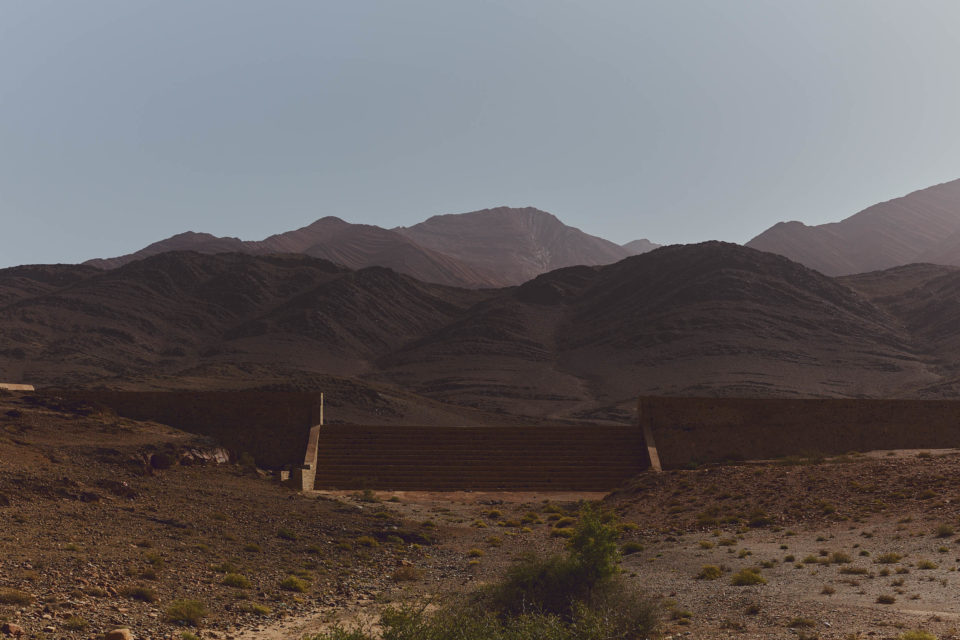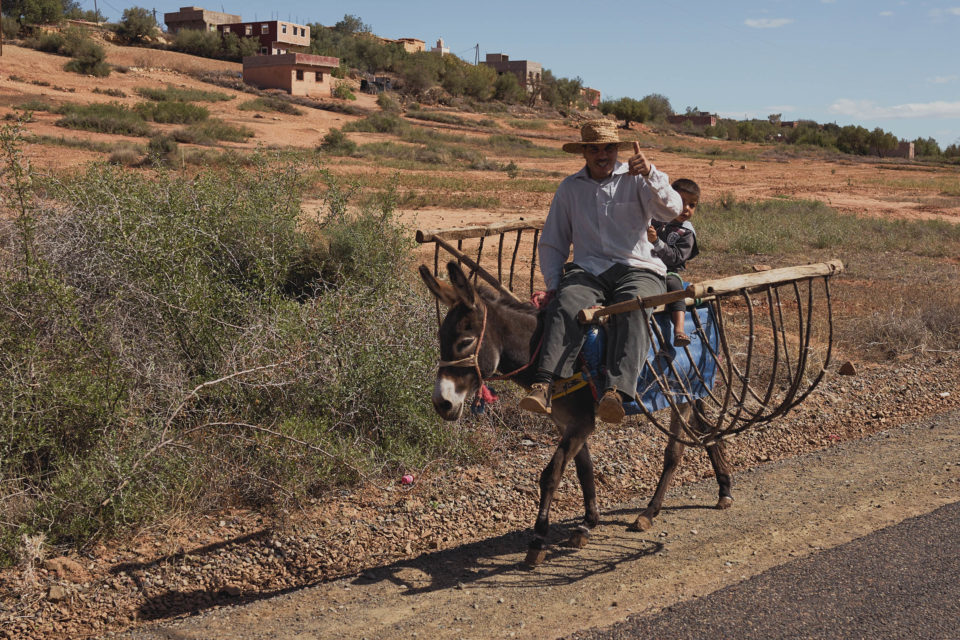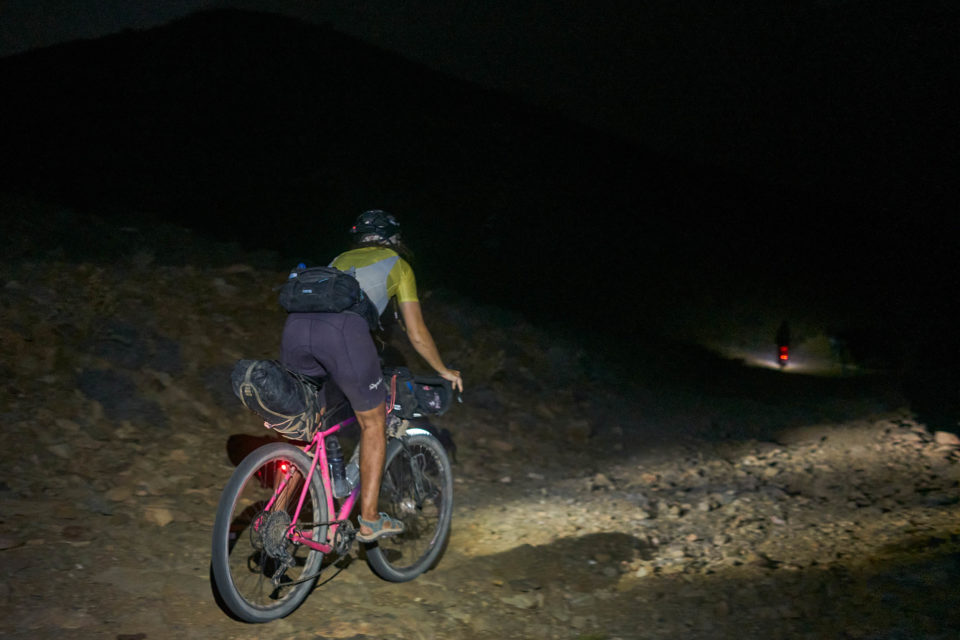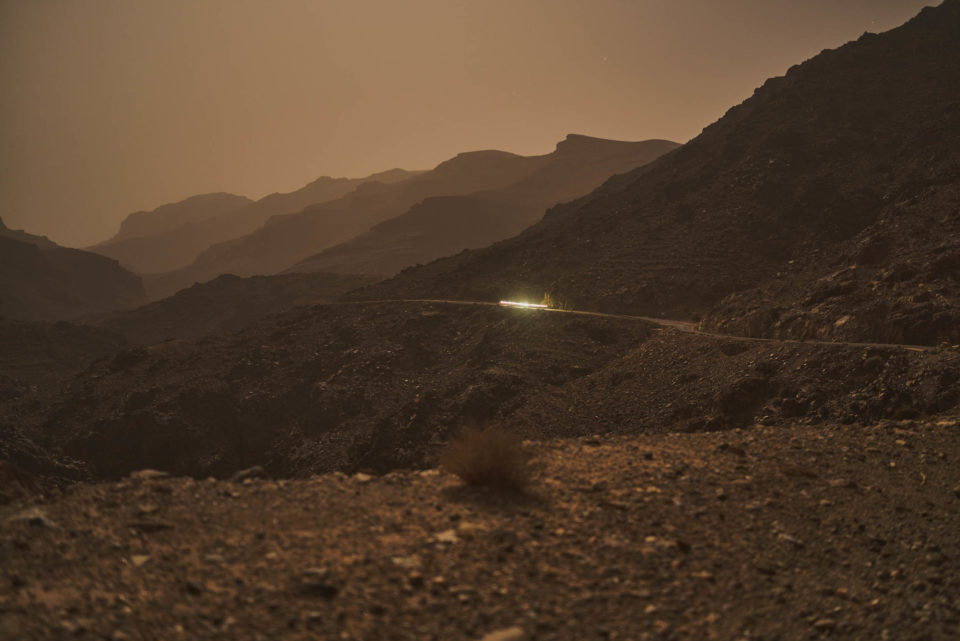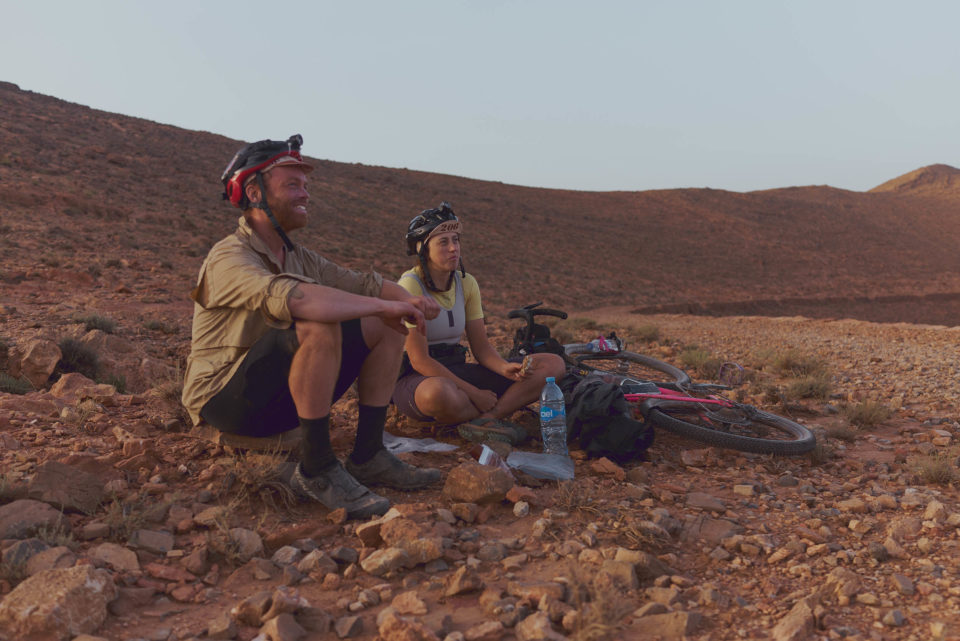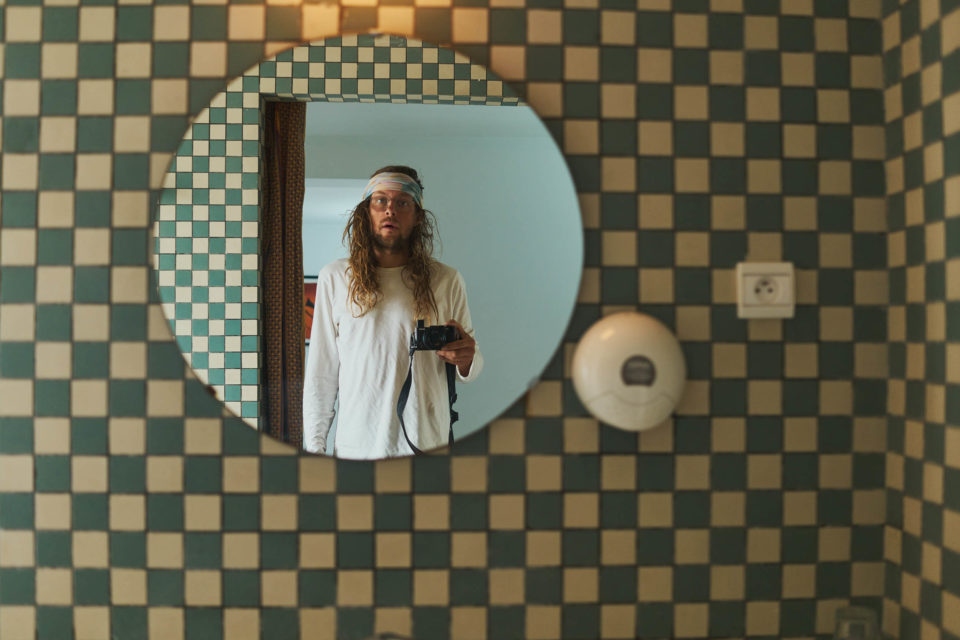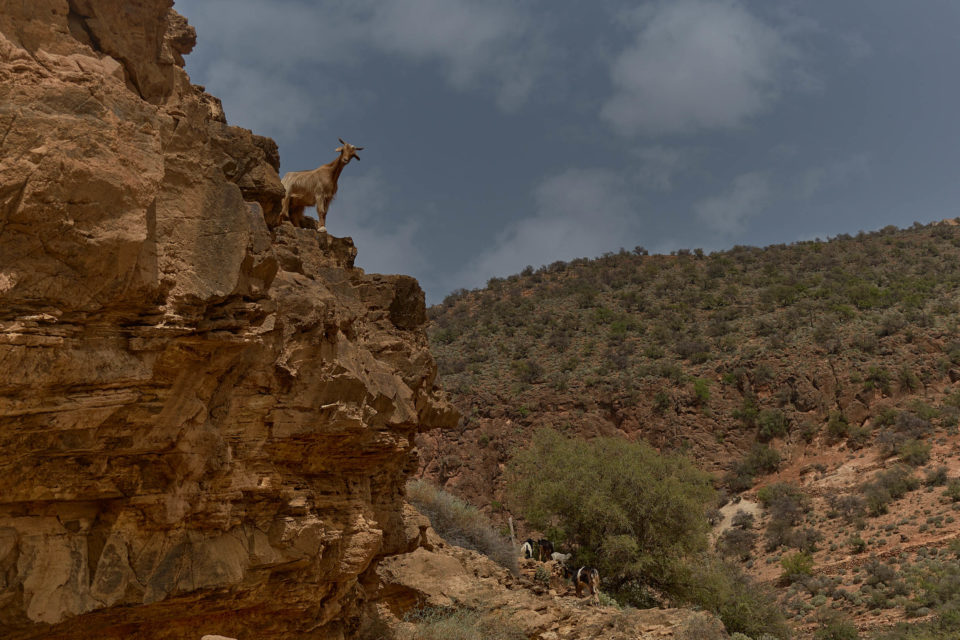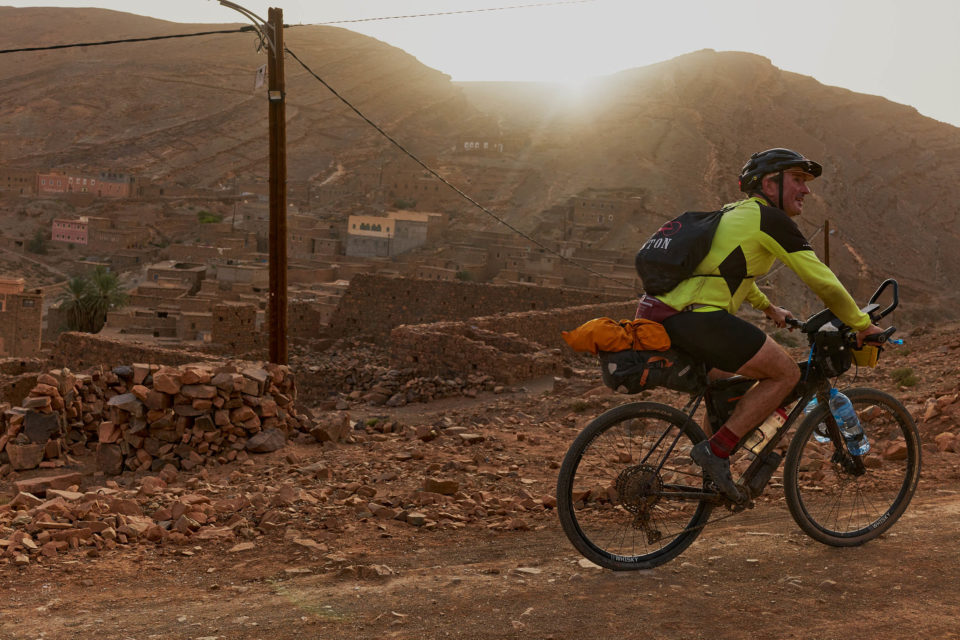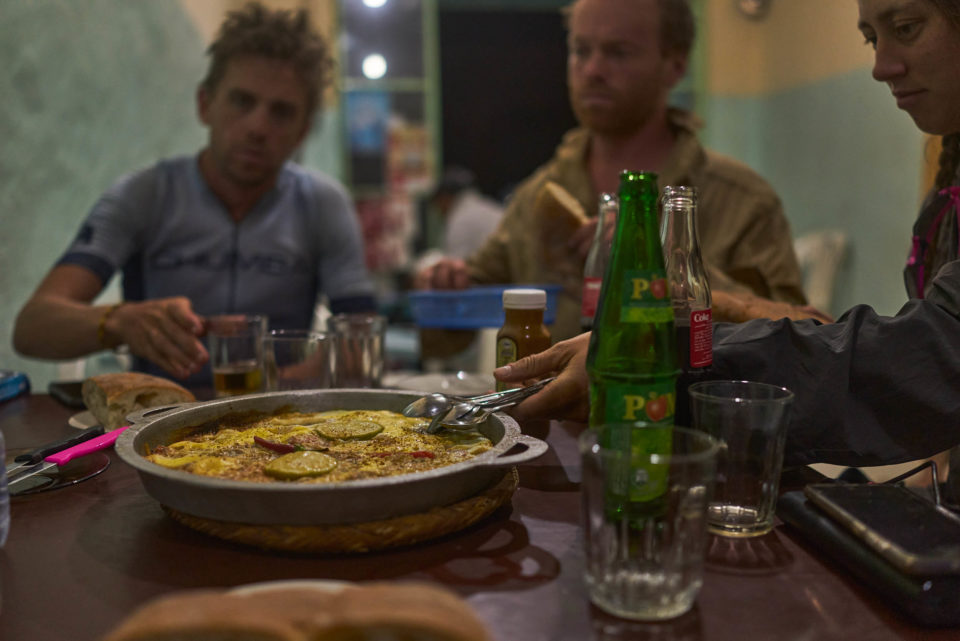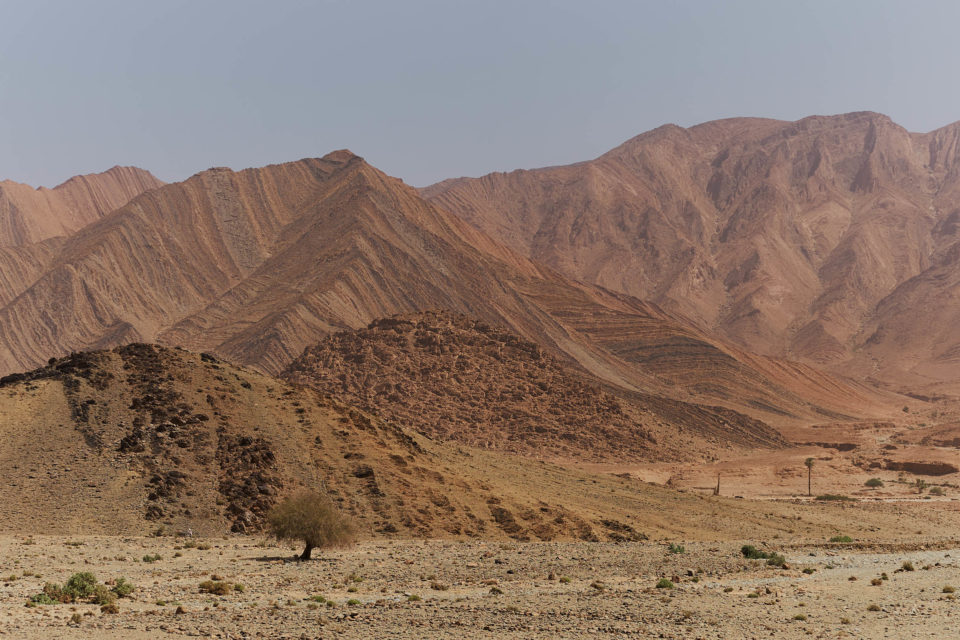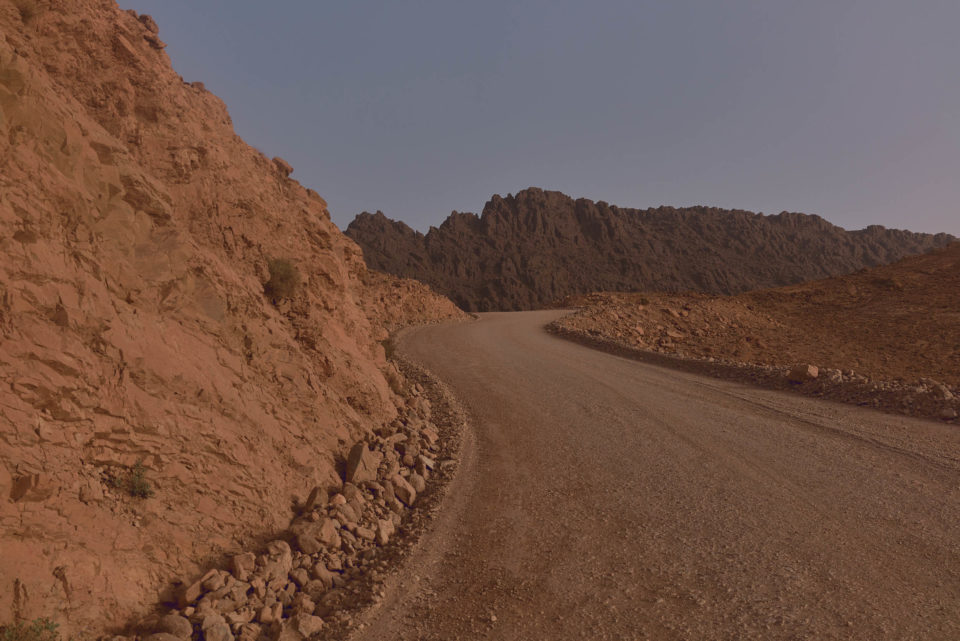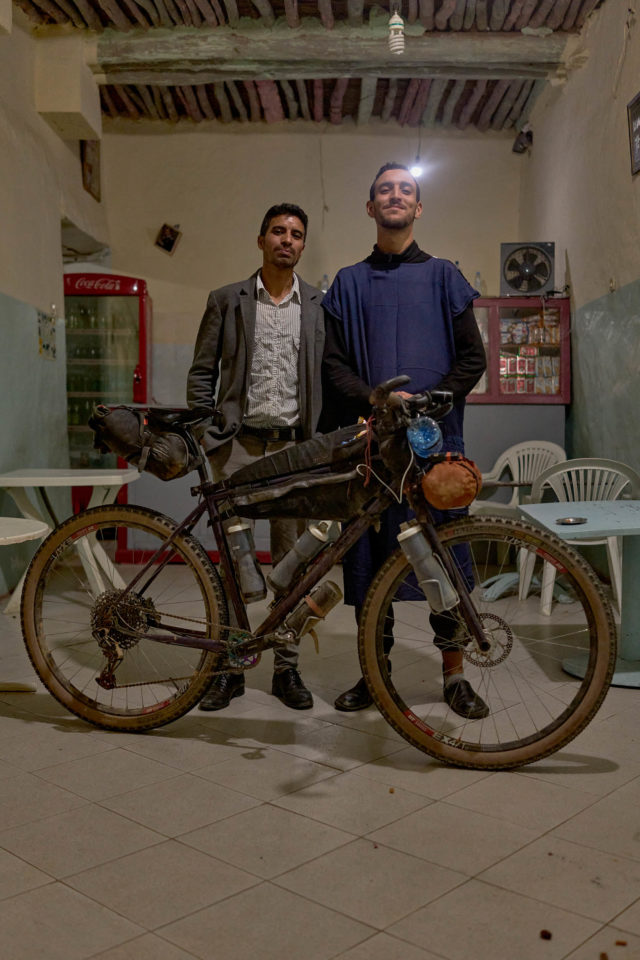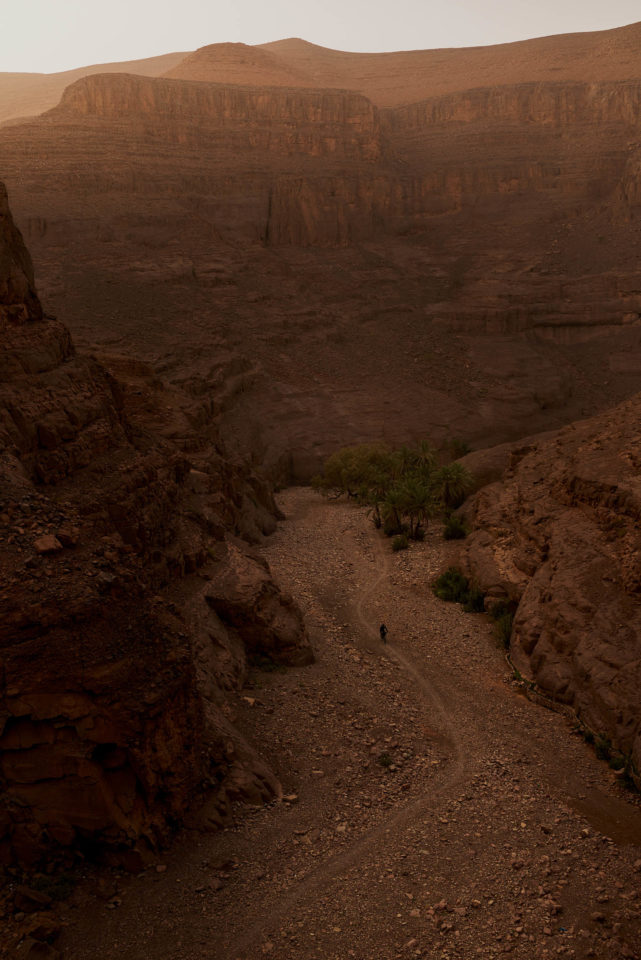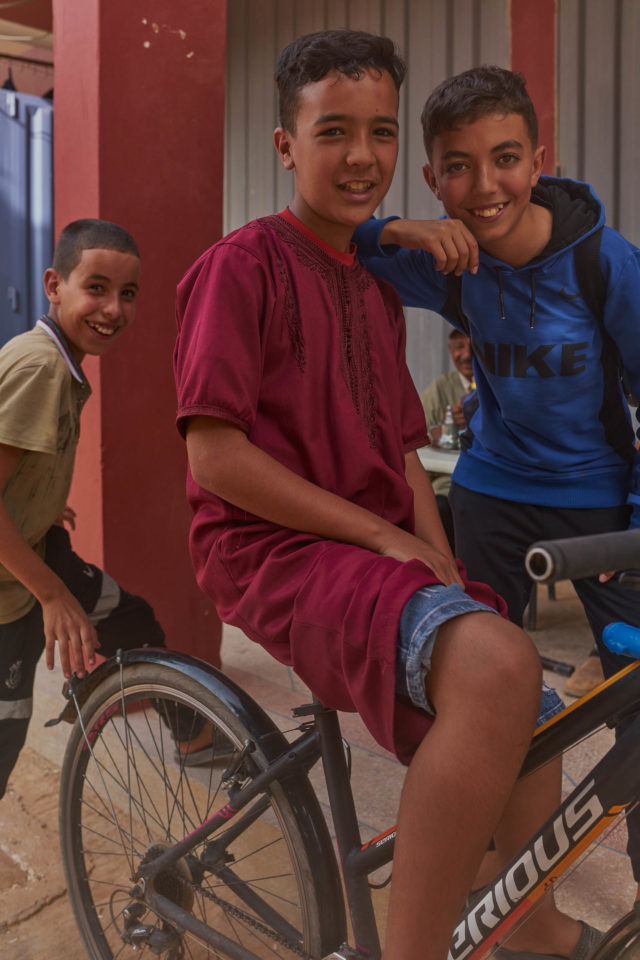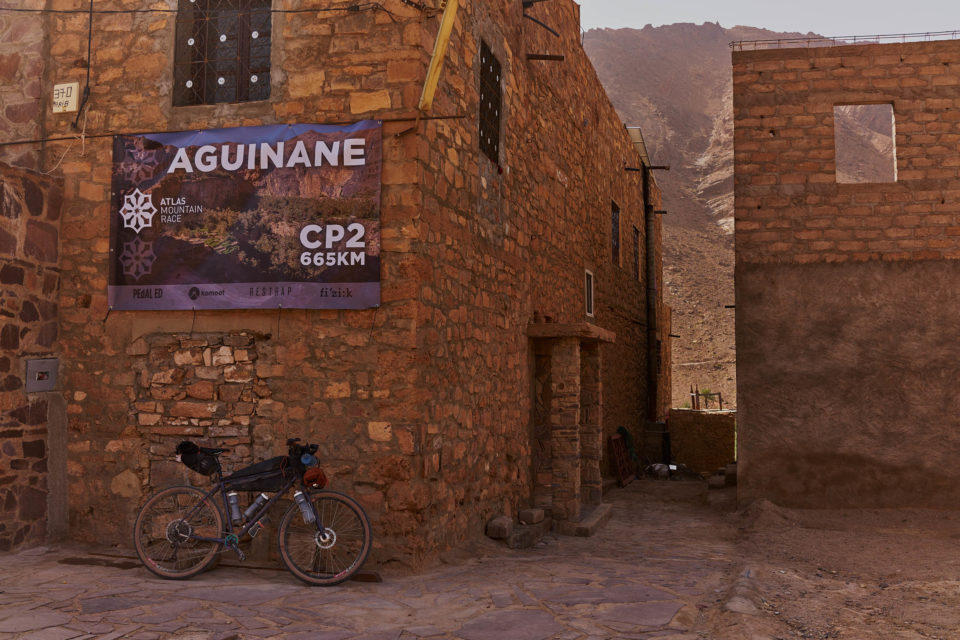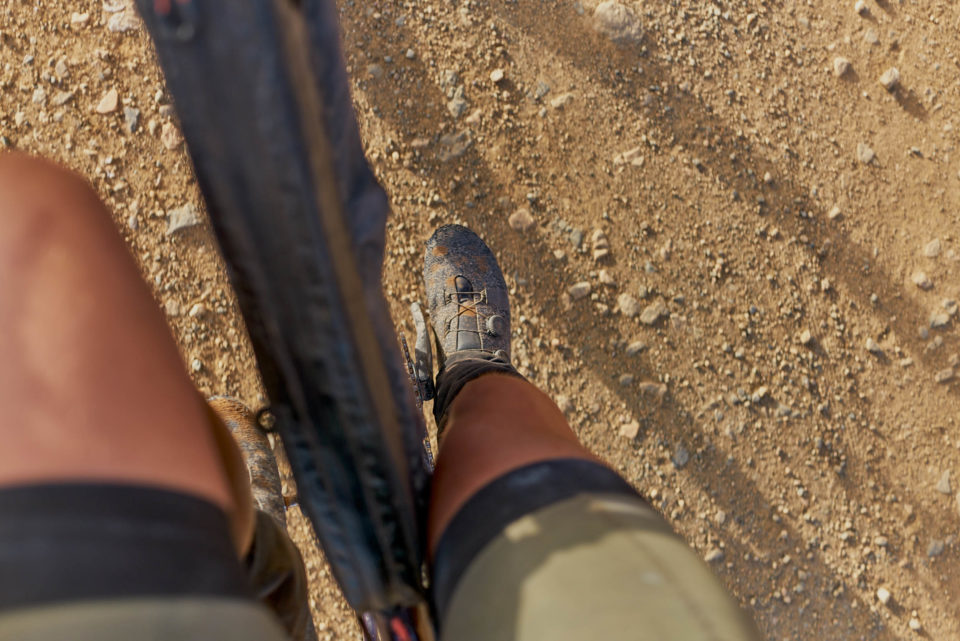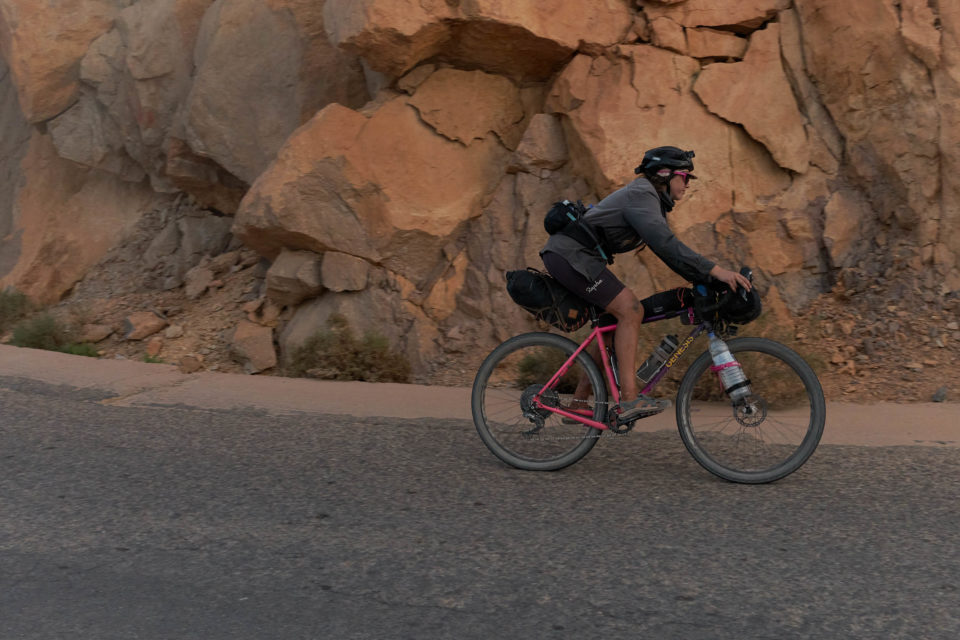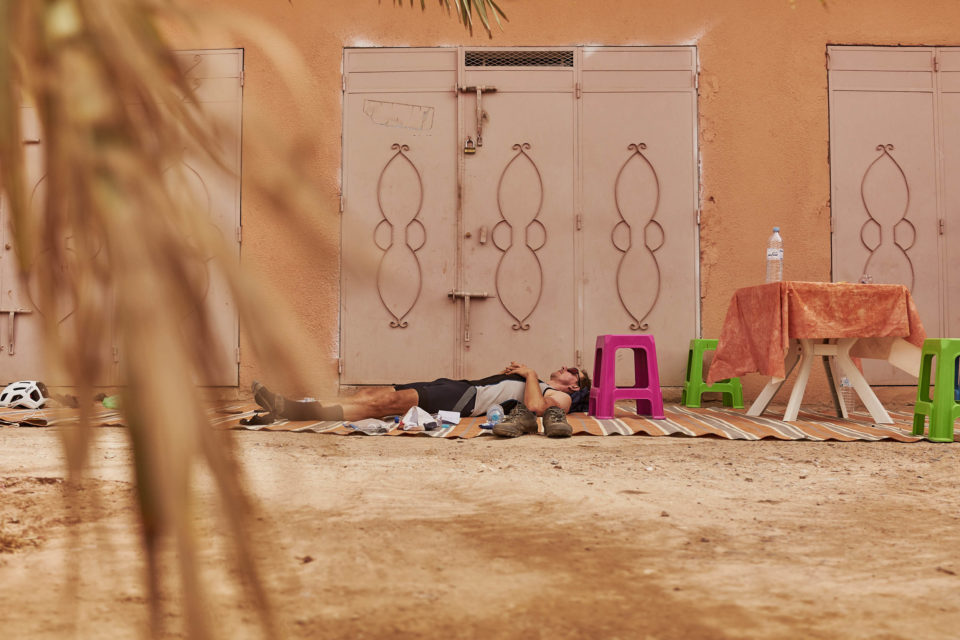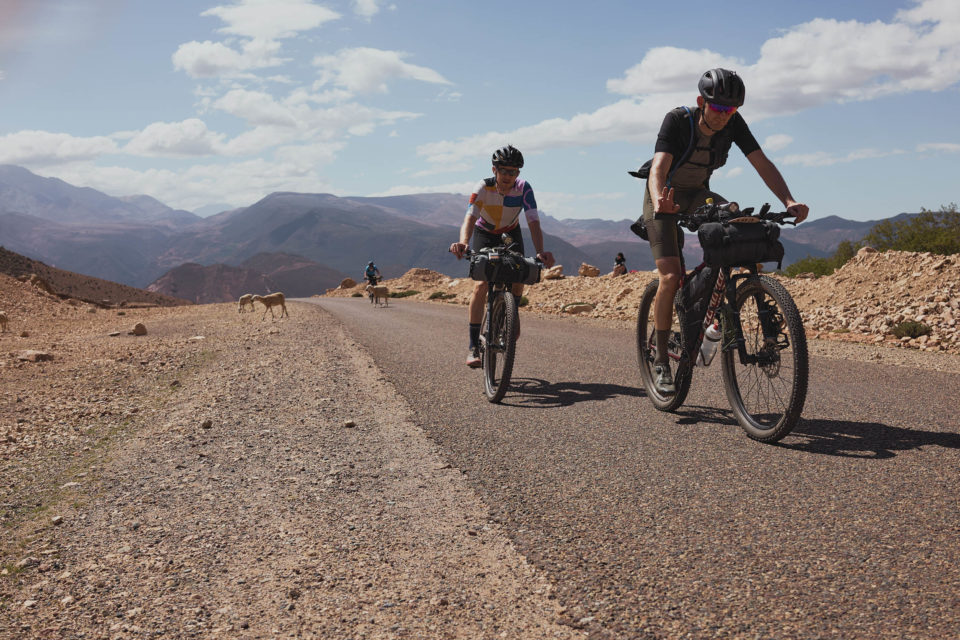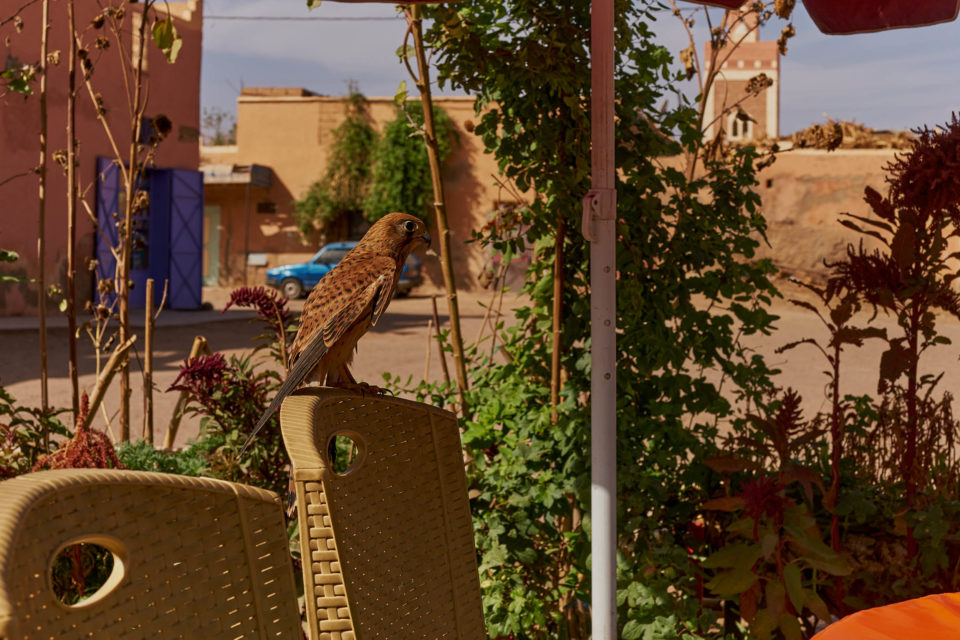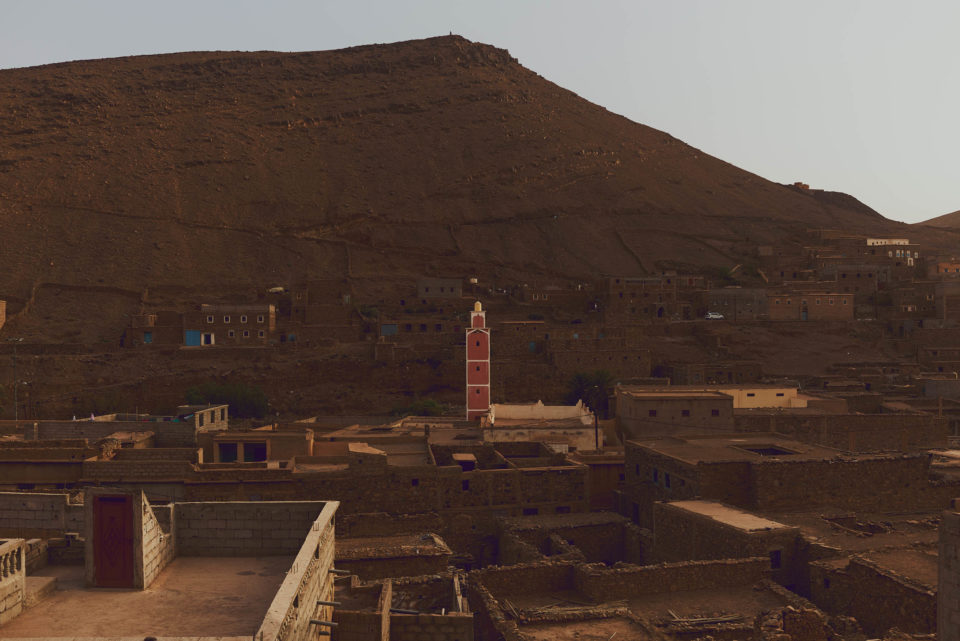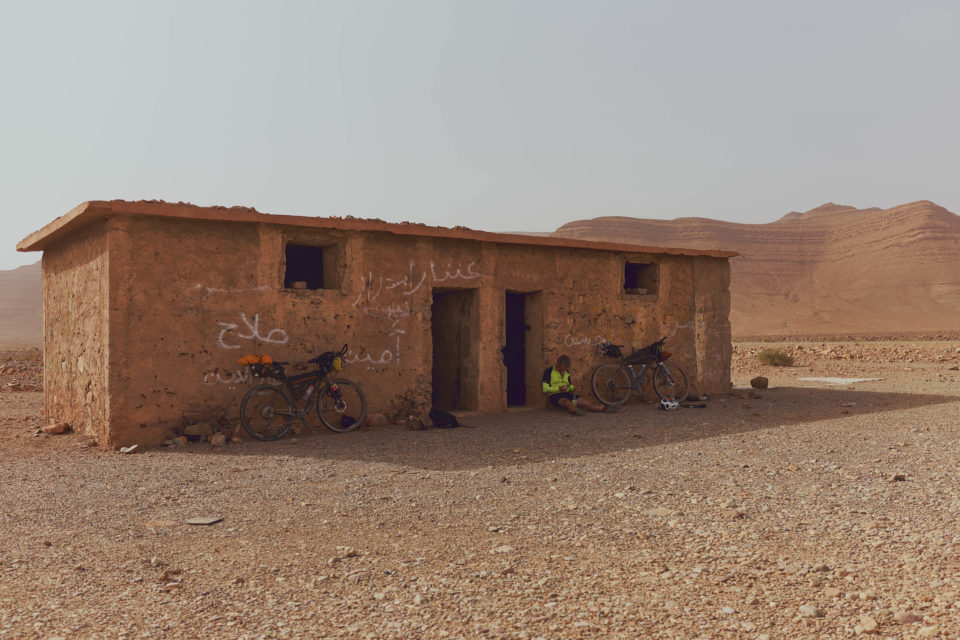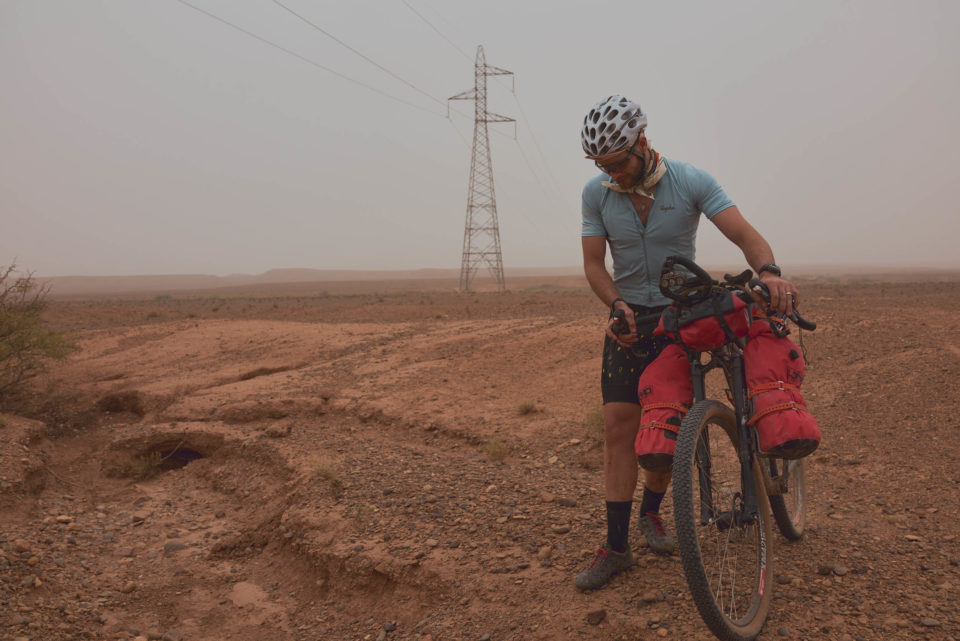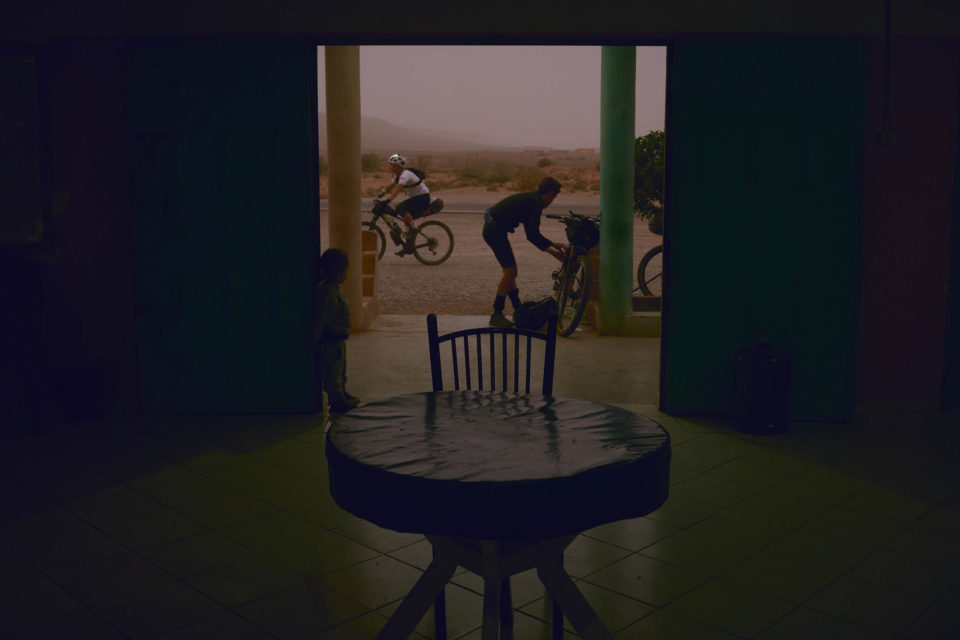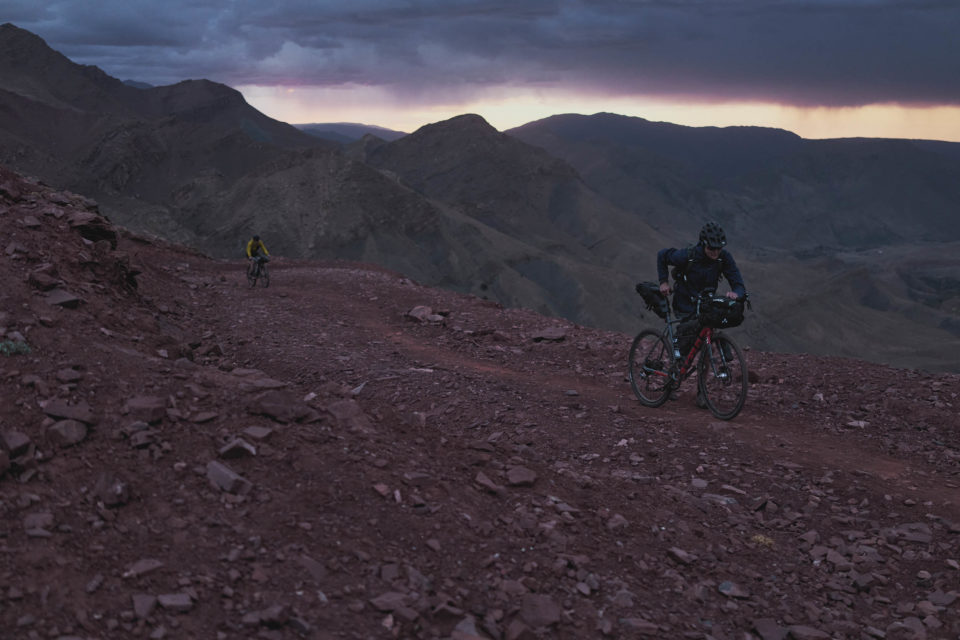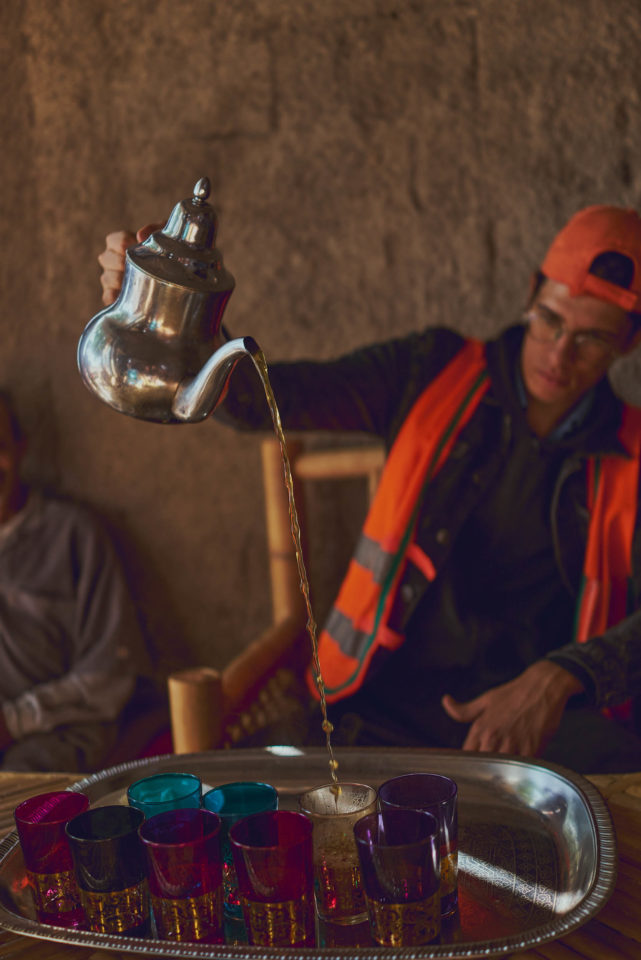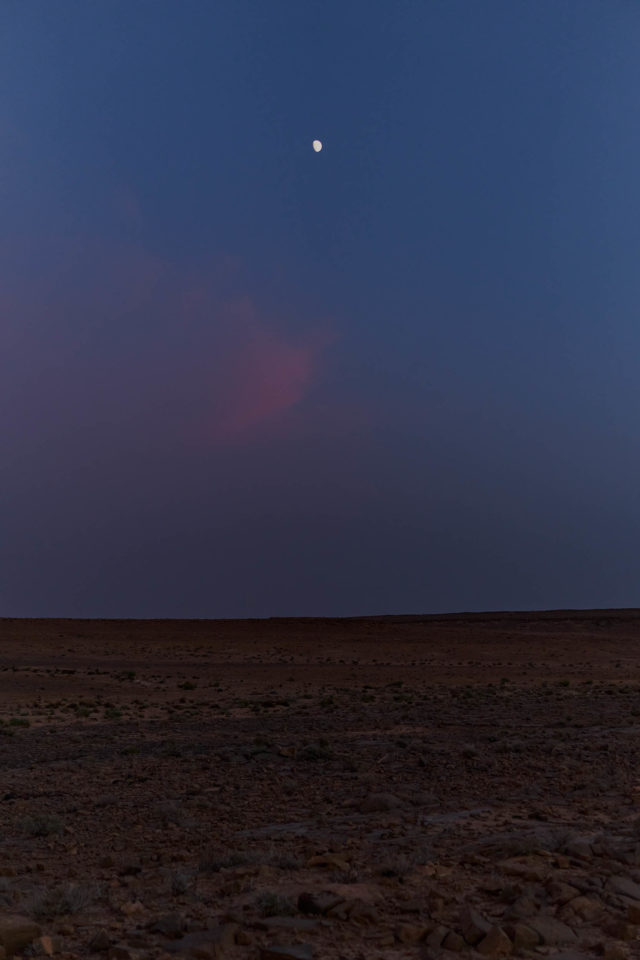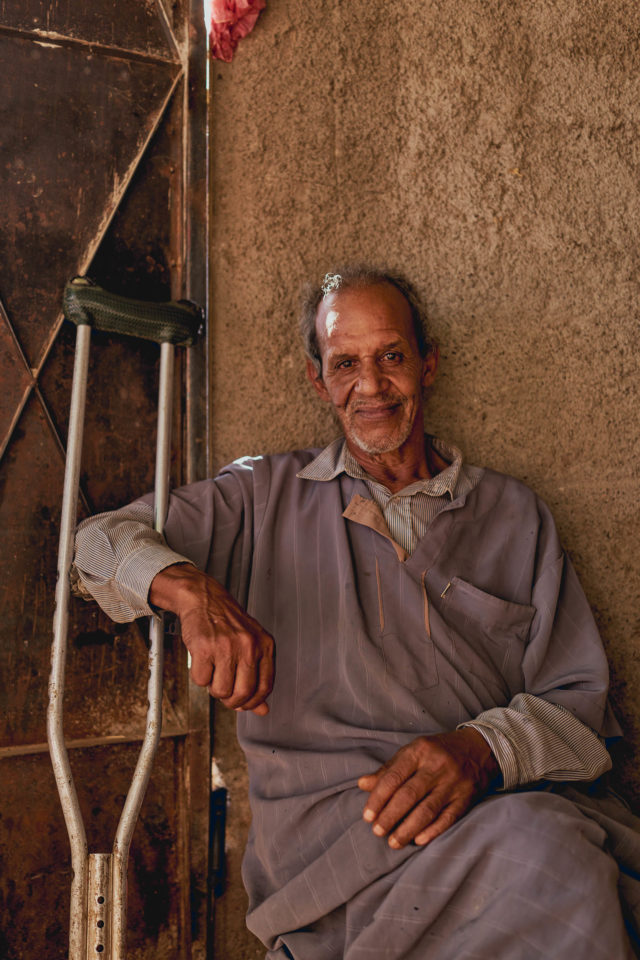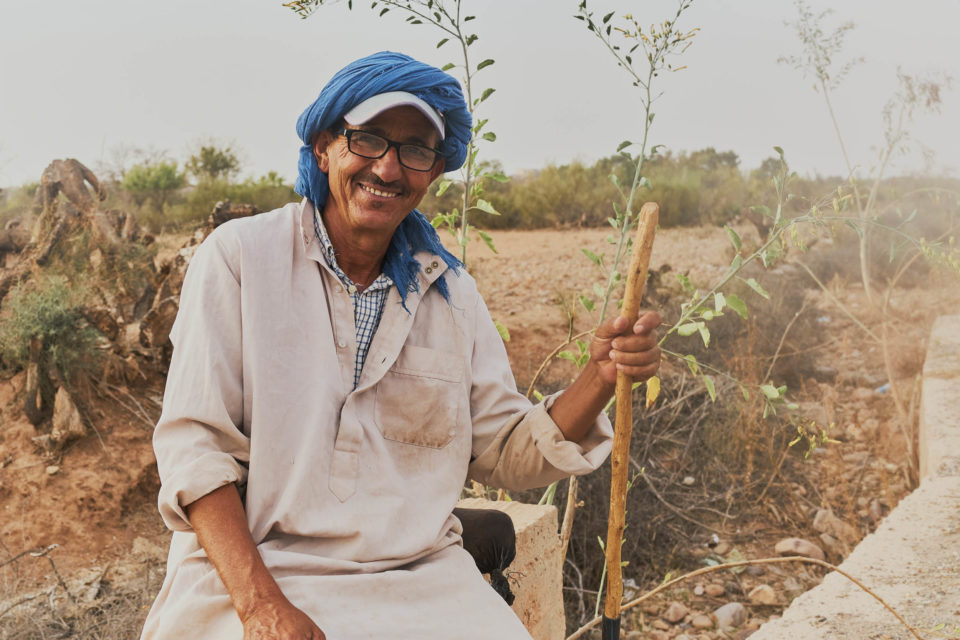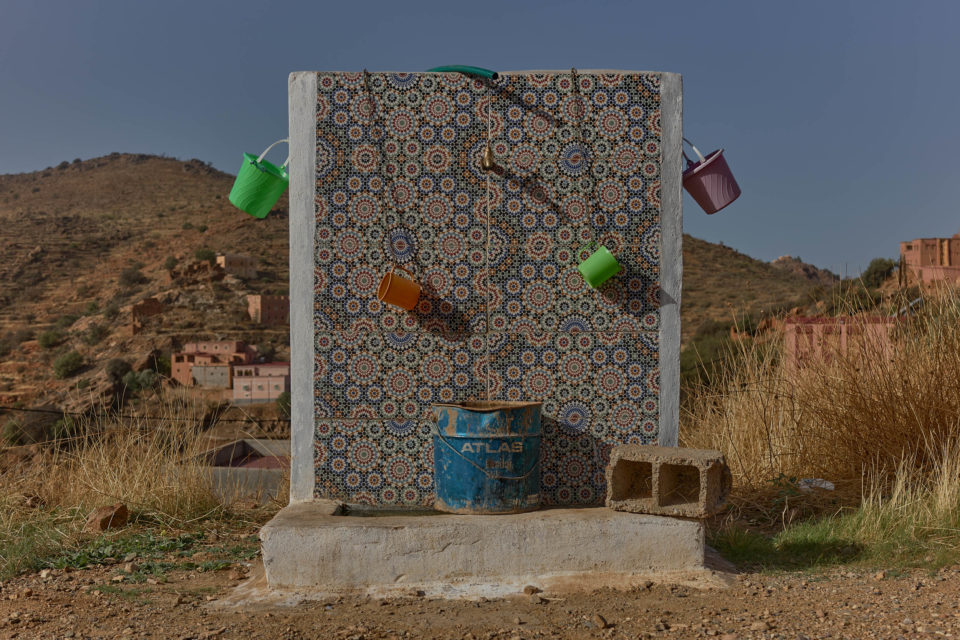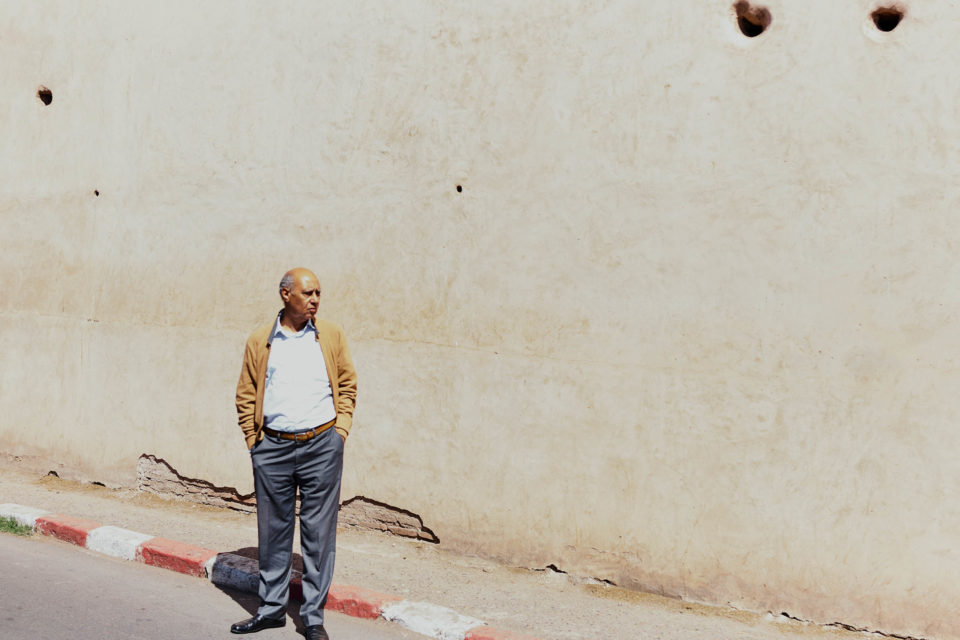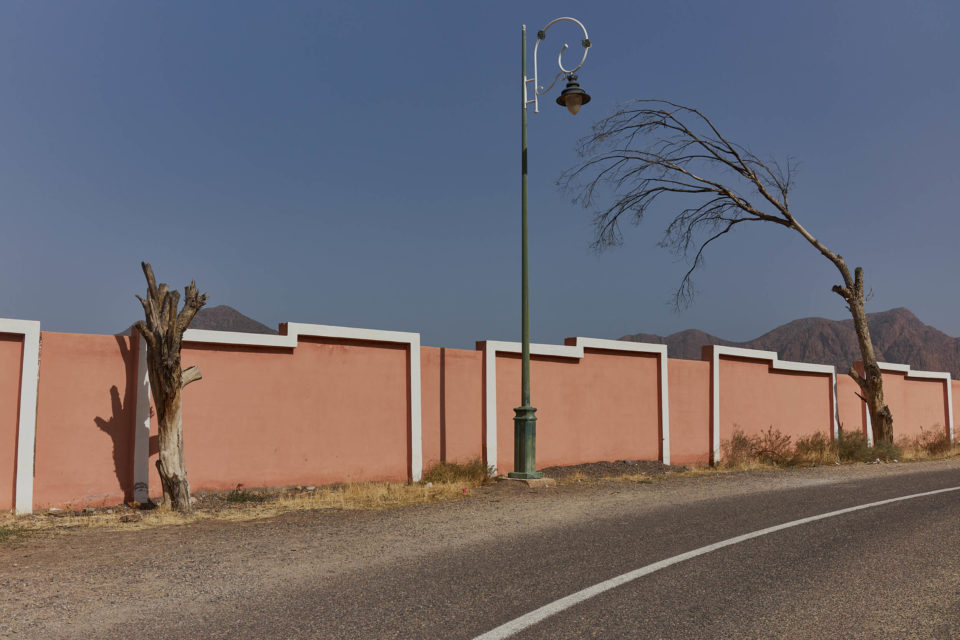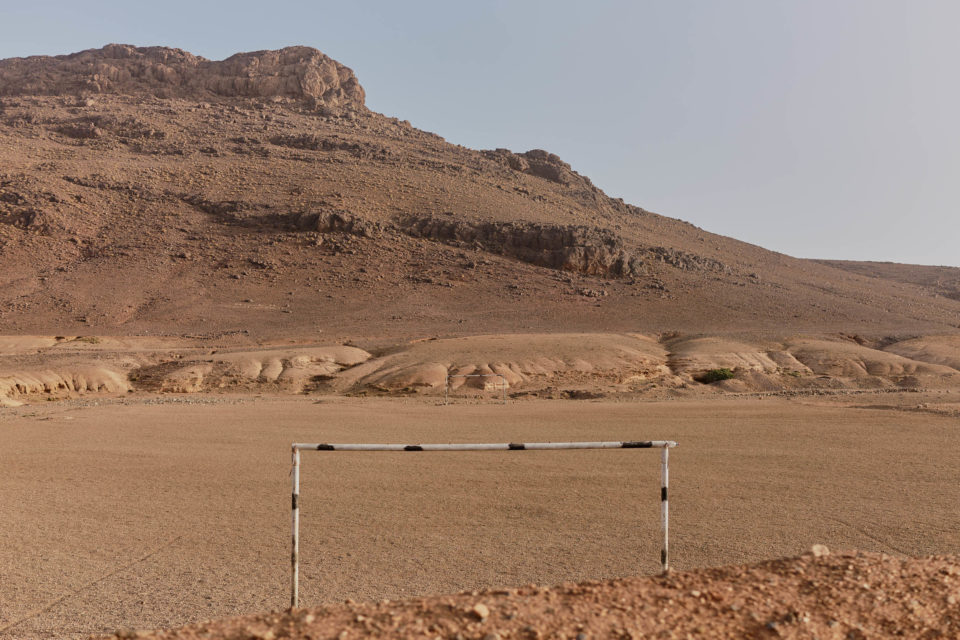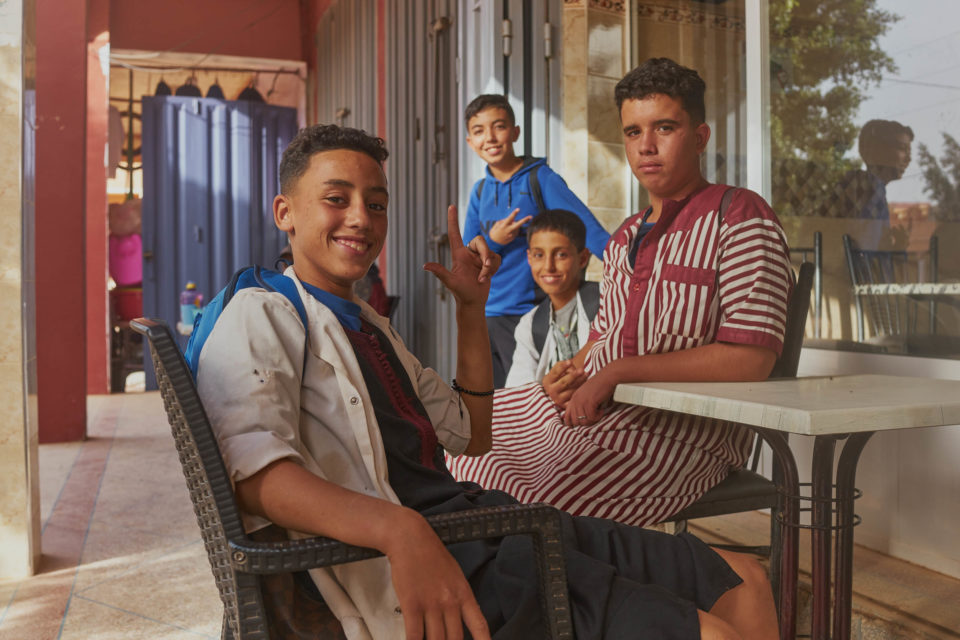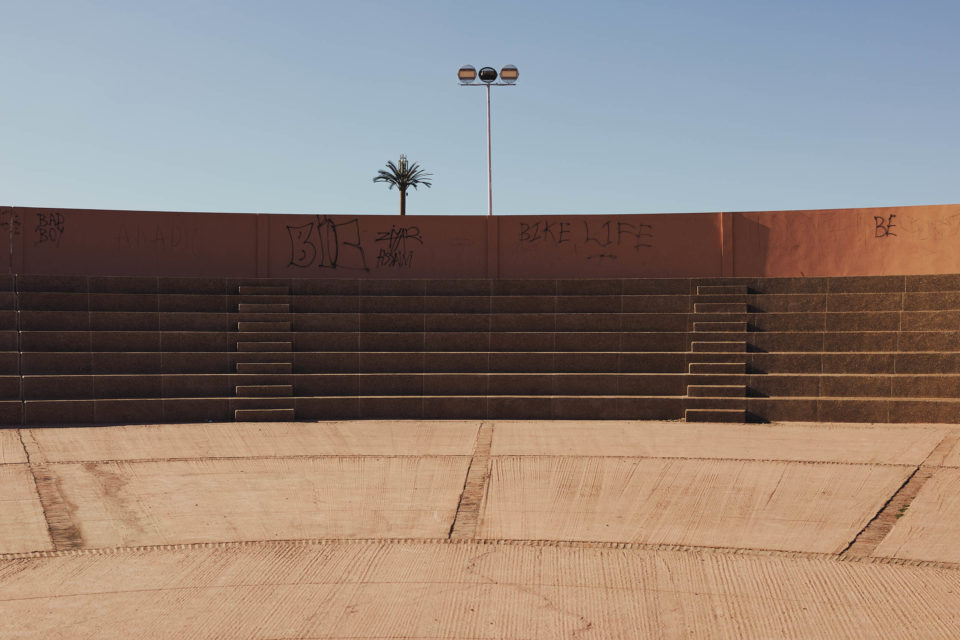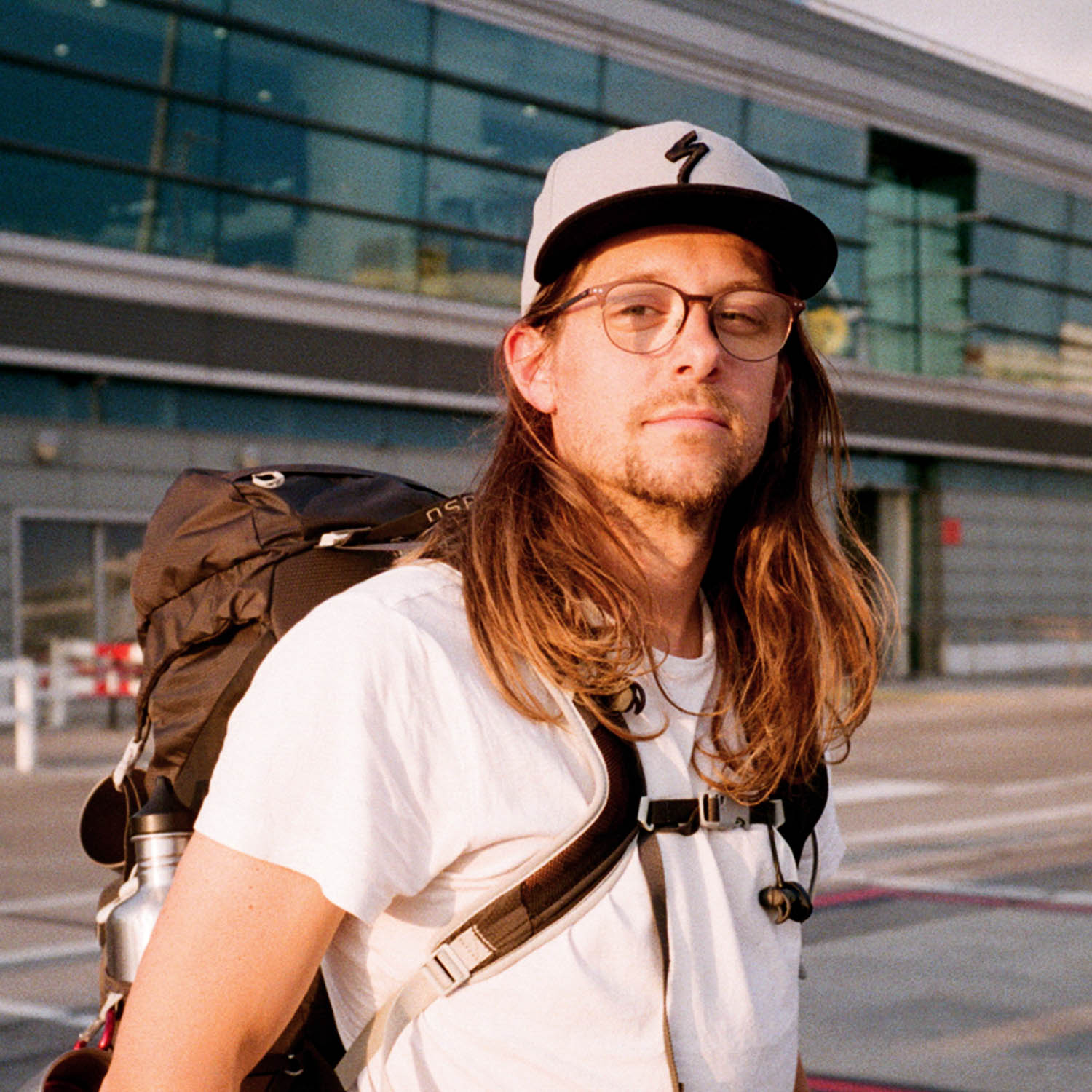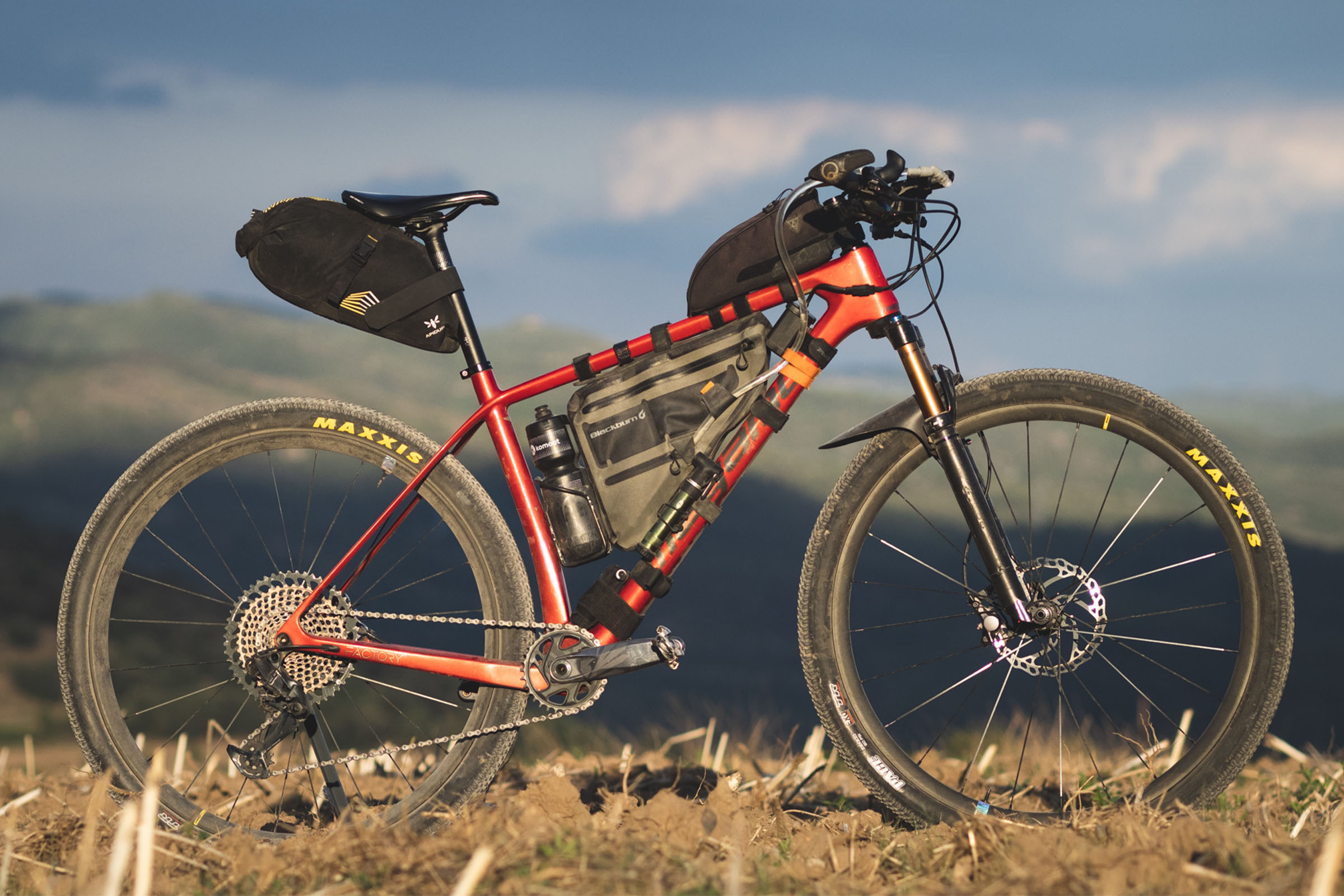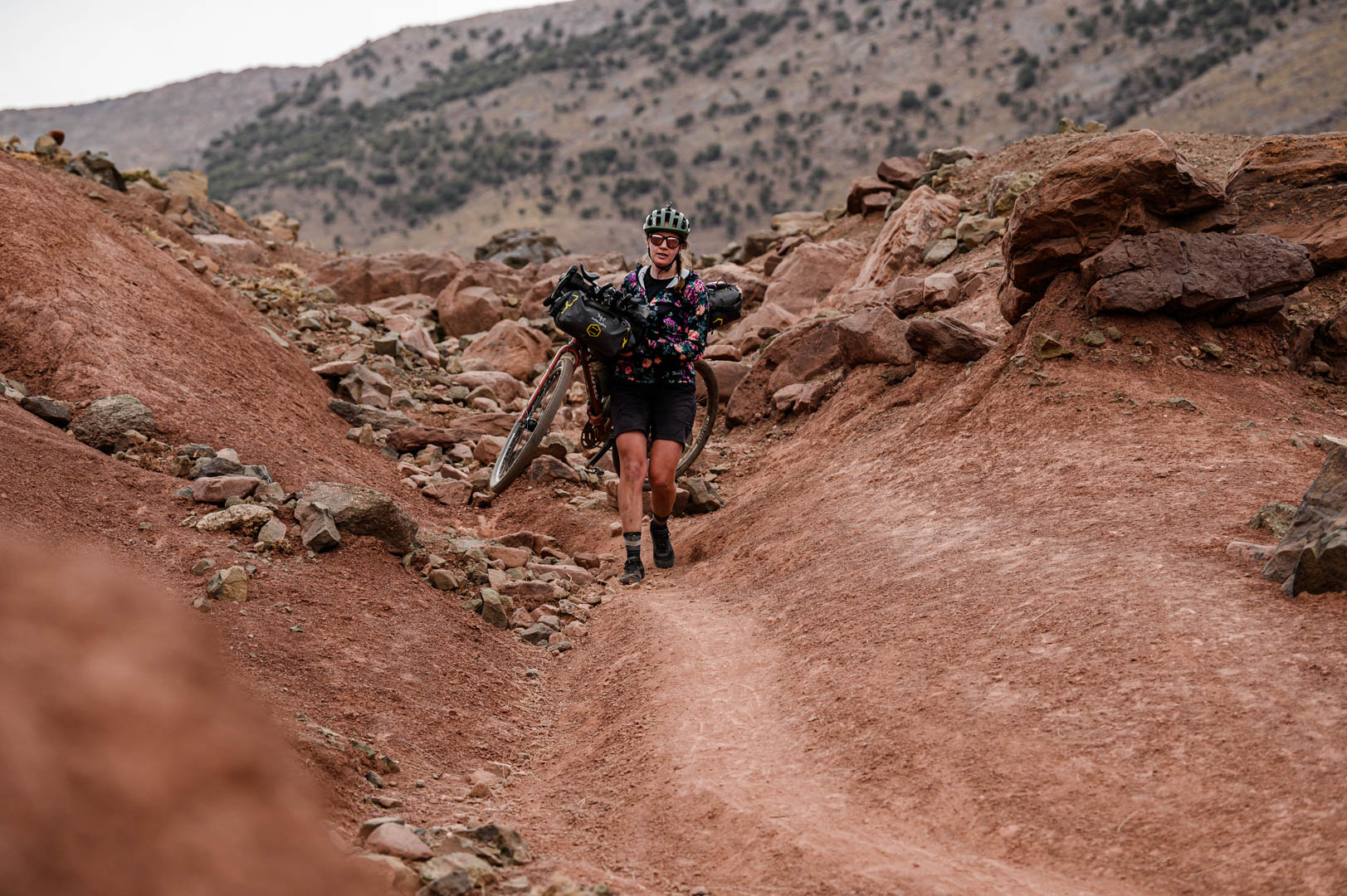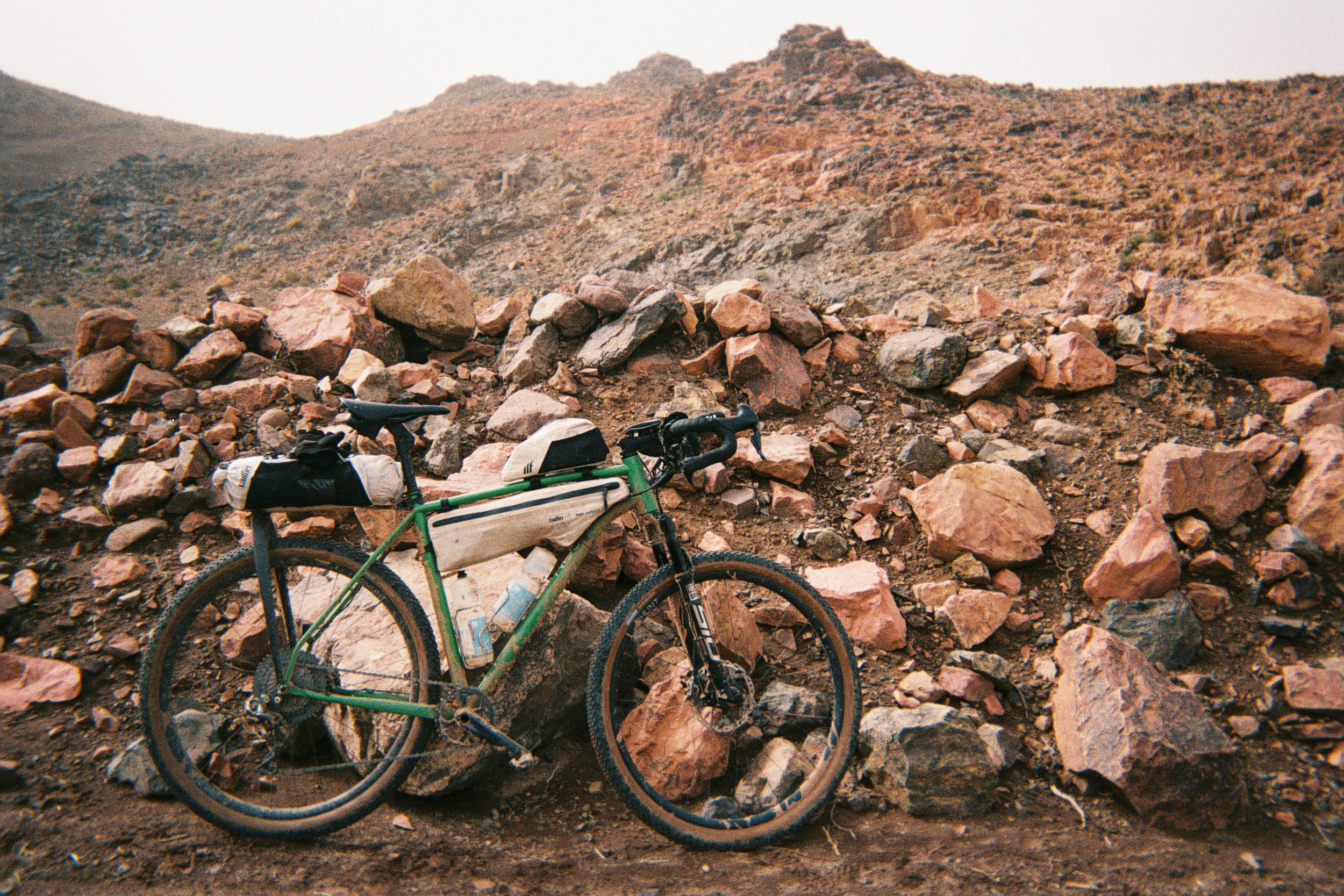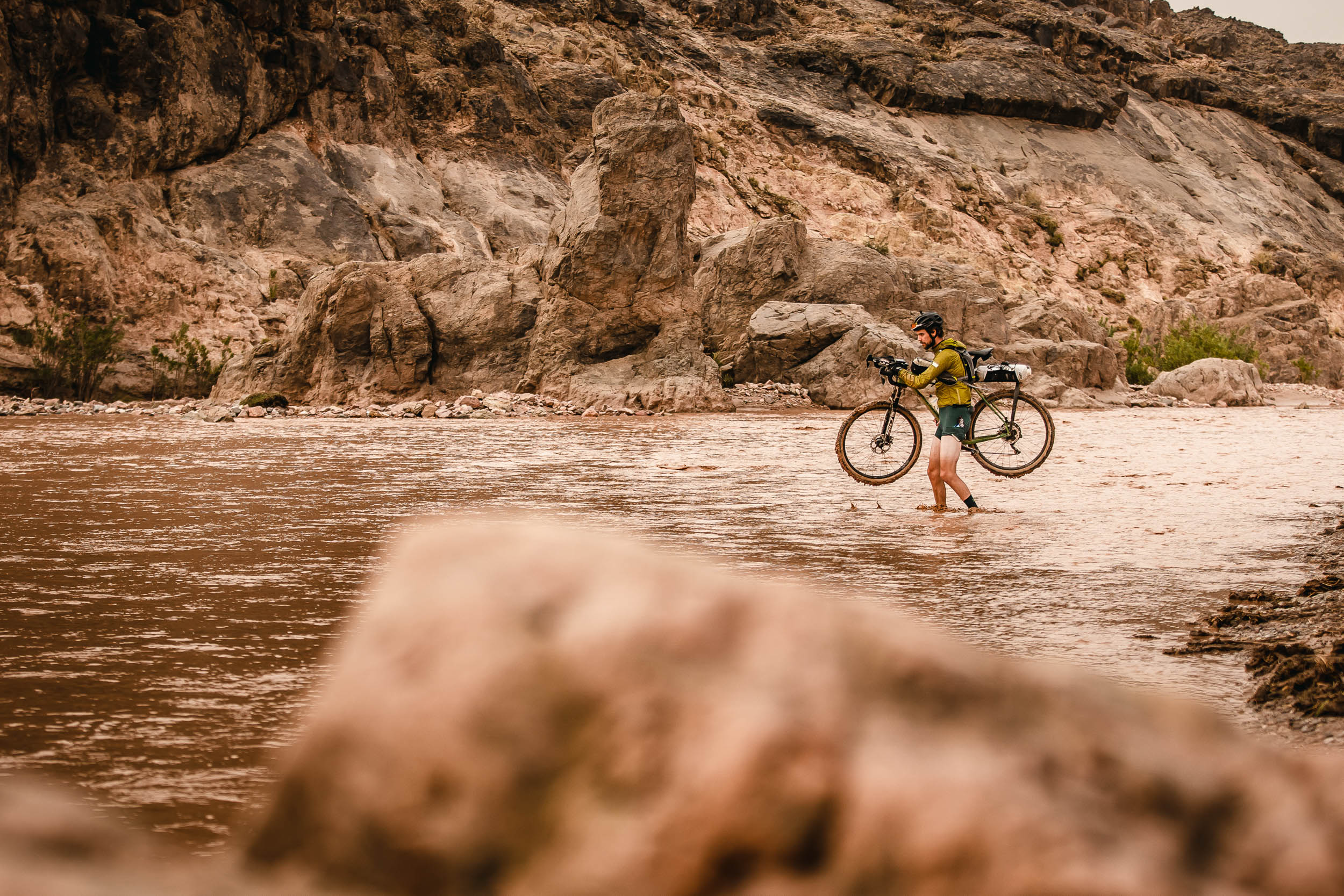Atlas Mountain Race 2022: Painting an Ultra Picture
Returning to Morocco to participate in the Atlas Mountain Race for a second time last year, photographer Michael Drummond was intent on taking time to fill in the gaps from his previous experience of rushing along the 1,170-kilometer route. Find his story of slowing down to paint a clearer and more vibrant picture of the country and an expansive gallery of images here…
PUBLISHED Jan 9, 2023
Words and photos by Michael Drummond (@drummondphoto)
Discussions on goal setting and intentions rattled between new and old friends as we gathered in Marrakech ahead of the start of the 2022 edition of the Atlas Mountain Race. After a couple of puzzling years of cobbling together trips, it was good to be back together, sharing stories of trips, injuries, FKTs, and races. Between catch-ups, riders were treated to excursions to the fringes of the city led by enthusiastic guides from Pikala, a cycle cooperative, to explore huge protected palmeries, see the production of intricate ceramic works that are now sought by the rich and famous the world over, and drink mint tea in the homes of the locals. The initiative seeks to increase the use of bicycles in the city and reduce the increasing emissions from the heavy use of cars in the Moroccan capital.
Mingling over, I settled into pre-race limbo once more; unlike before my inaugural race effort, I was less concerned about the route as I had vivid memories of so much of it. I think the clarity of my recollection from the first edition was down to it being my first experience like it, and so I set out without a camera to allow myself to take in the unique and wonderful journey unfettered. In doing so, I seemingly held on to every mile with not only the white knuckles of my grip but also my mind. That said, as is the nature of racing, everyone hits different markers at different times, and having heard stories of views, animals, and challenges from others riding in different parts of the pack, I knew that the picture I had wasn’t entirely coloured in.
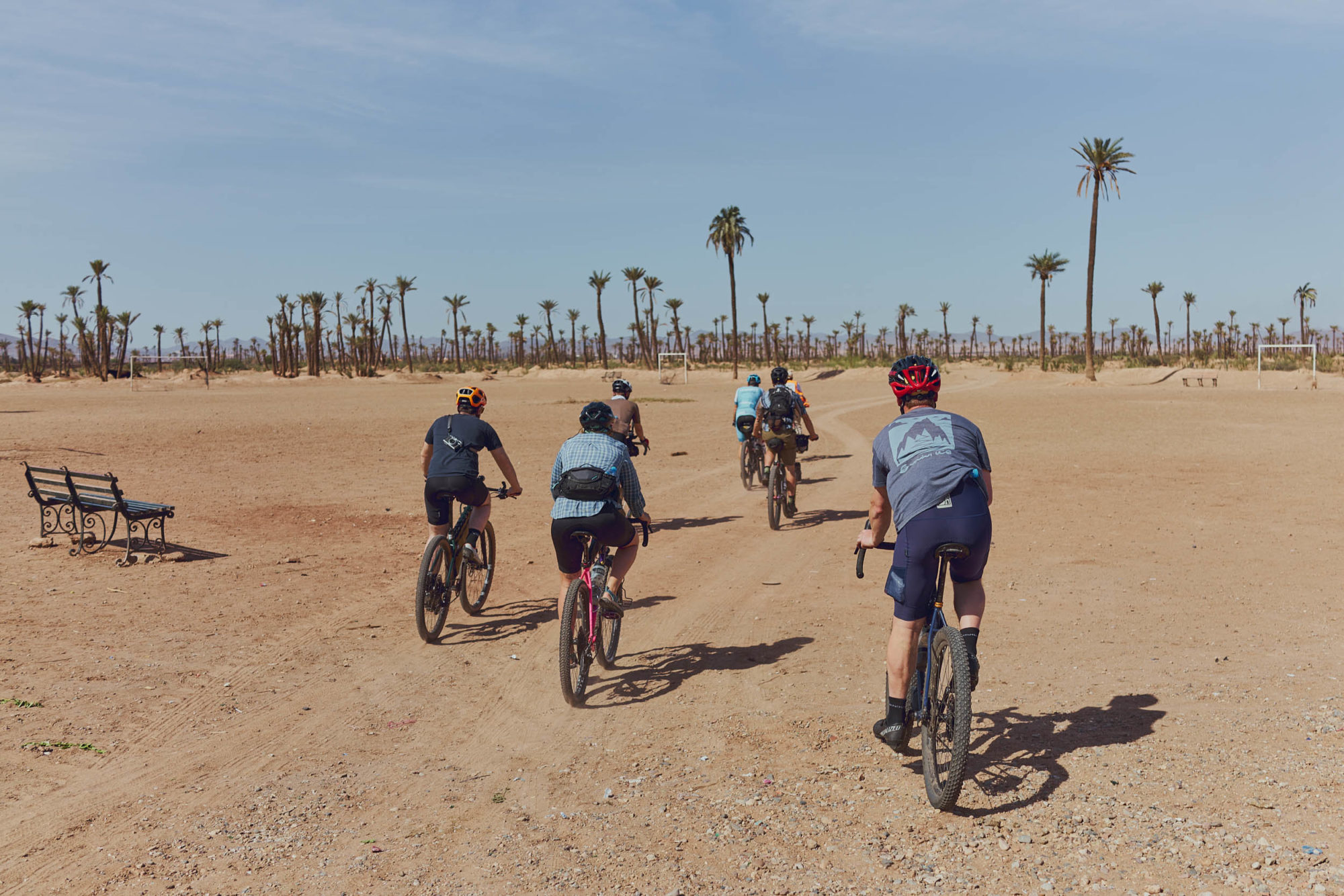
There were valleys and vistas that I’d passed through in darkness and hoped I’d witness painted in colour with the sun’s vivid brushstrokes this time. I put any competitive goals to the back of my mind, deciding to focus on seeking perspectives I’d not seen the last time around. That was to be my carrot on a stick. Bags packed, food stuffed into pockets, and, most importantly, camera over my shoulder, the Atlas Mountain Race now lay ahead: 1,167 kilometres of neither all-new nor all-familiar terrain.
I hadn’t imagined that the first 100 kilometres could show me anything I hadn’t seen before. My fitness was in a similar place, so I wouldn’t be getting anywhere quicker, but there’s always one thing that remains ever-changing in a landscape: the weather. An unexpected thunderstorm complete with hail, heavy rain, and plenty of lightning waited for many of the midpack riders at the top of Telouet Pass. A fine layer of rain on the rocks extinguished any idea of rushing out of the storm on an already hard-going descent following a laborious hike-a-bike section.
Soaked and pretty damn tired, like many others, I arrived at CP1 and chose to bed down and wait out any more downpours. After a brief sleep, I made an early departure, taking the next section in a soupy darkness with fog shrouding the fractal shapes of trees by the roadside. A murky morning faded into a hot, dusty day, with the desert rising up to meet the cloud denying the sun a clear view of the earth—a single disc hanging in a featureless sky. The air was littered with billions of particles of sand that collectively assaulted riders pushing through their chaos, causing bloody noses and hacking coughs.
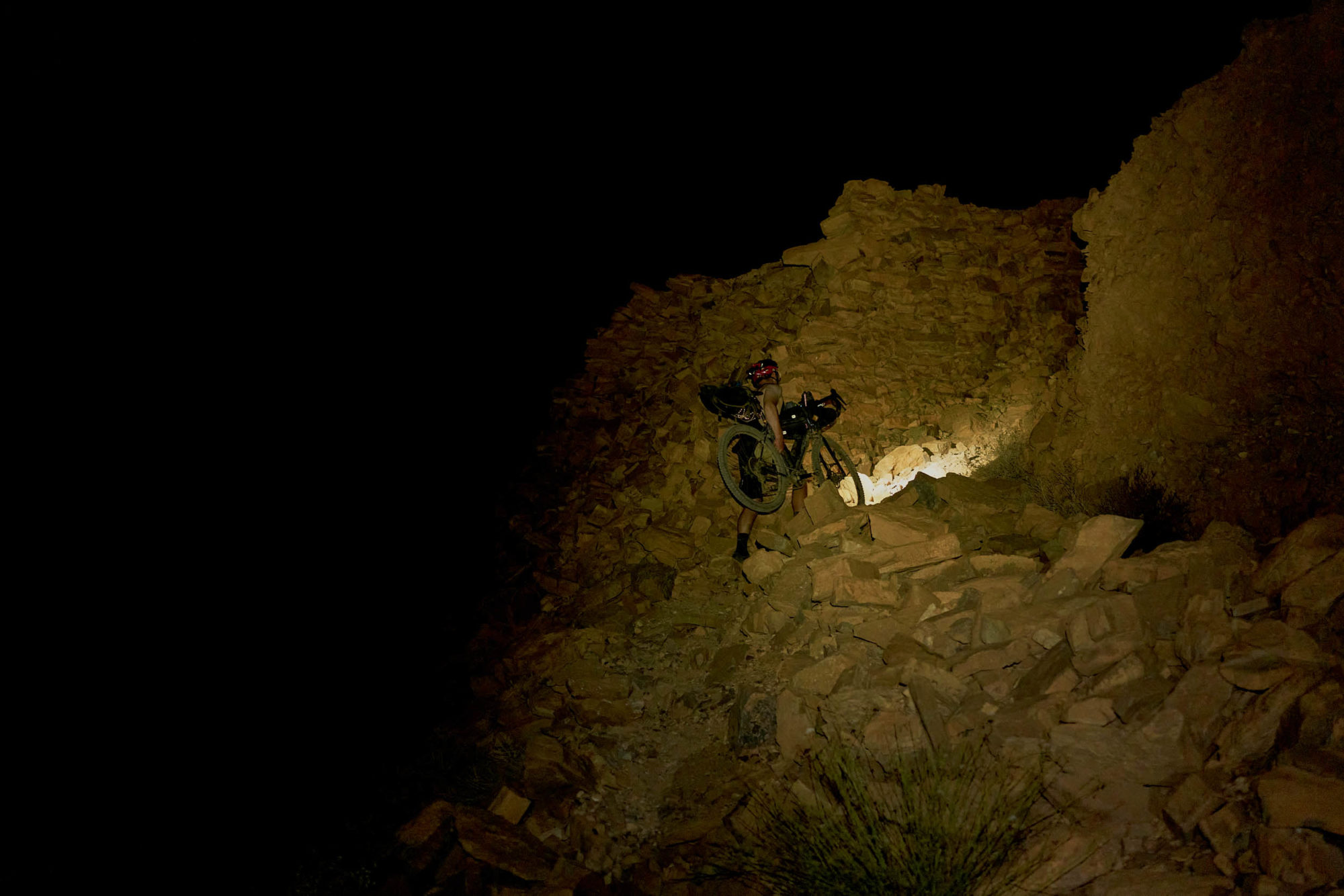
The thing about memory is that it isn’t infallible, and your narrator is maybe not as reliable as he first believed himself to be. The clear picture of the course that I had in my mind gradually became punctuated with sprawling segments I had somehow blocked out. One such stretch came in the form of a wet river bed. It was silty, claggy, and littered with tyre marks and unfortunate footsteps. When I crossed it, just small patches of water remained, belying that a waist-deep torrent had kept many riders at bay only a few hours earlier.
I tackled the boggy drag up the river alongside the mixed pair of Jade Saskia Field and Carl Hopps, who were part of a pocket of riders who’d leapfrog each other for much of the race. For some reason, more so than the last time, I savoured these potted interactions: passing a sleeping rider, being awoken by someone else out with the larks, ordering a tagine, whilst others mopped their plates and flew back off into the dust. I was solo in my effort, but I wasn’t alone. After Imassine, the light faded, casting a strange hue over the landscape, which although familiar, now appeared as if masked.
The next day brought 130 kilometres to the Tizgui waterfall, which I planned to make wholly in daylight this time. Heading out from my camp spot beneath the stars provided some of the most impressive landscapes and thrilling descents of the ride: incredible Mars-like canyons as far as the eye could see partially obscured by a painterly haze kicked up by the desert winds. The smiles as I descended 1,200 metres off what felt like the end of the world were wiped off with the firm slap of the heat in the lower altitudes. The chance to refill water bottles and seek shade sprawled out on outlaid carpets in Afra was a welcome relief. A single small shop refilled my bags with “essentials:” 16 cheese triangles, two yoghurts, bread galore, Coca-Cola, and litres of water. With bags full to the brim with various dairy polygons, the traipse on to Tizgui began.
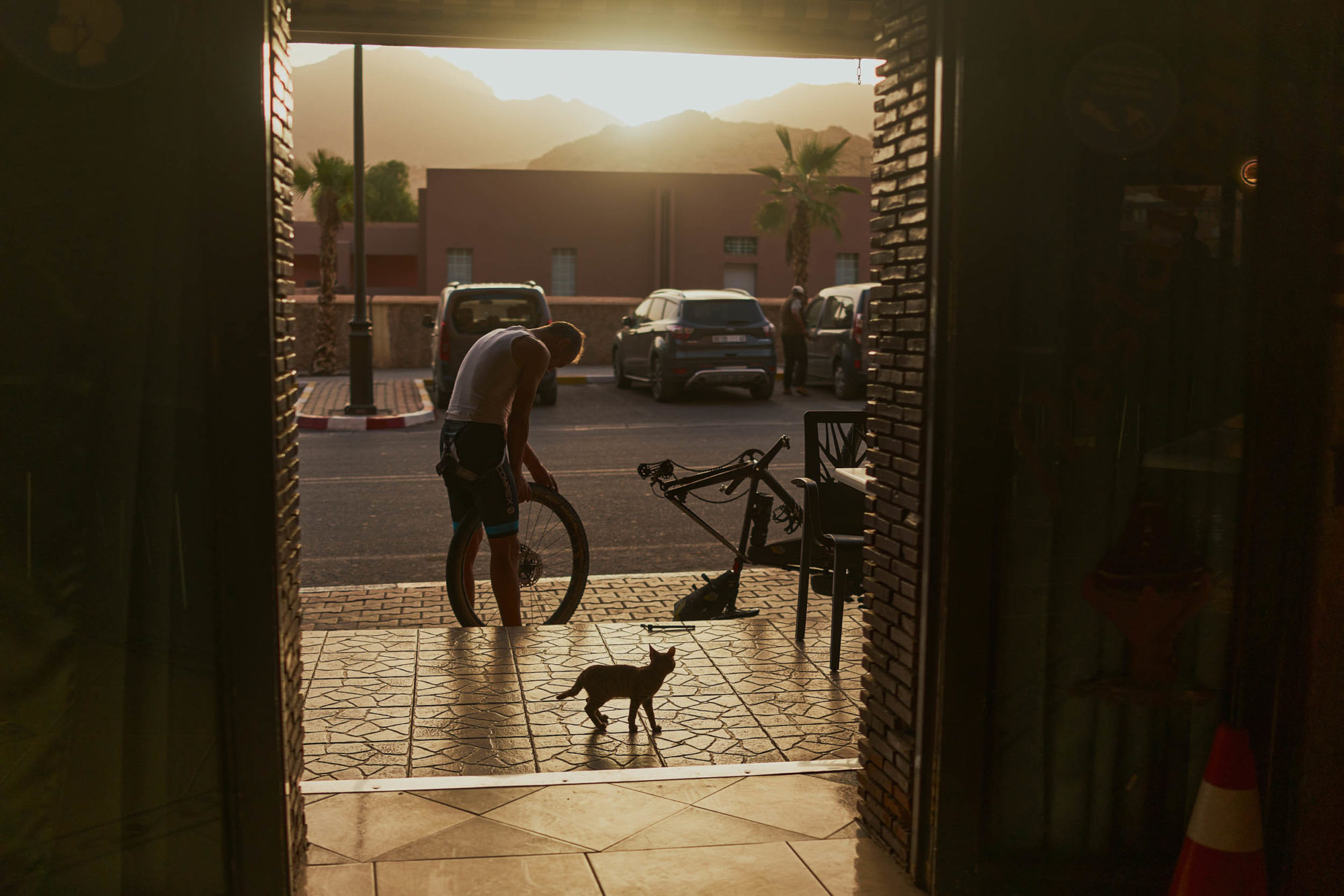
Soon enough, I reached the steep-sided valley to the waterfall, the clamber through a lot easier to navigate this time thanks to the sun pouring in over the cliff edges at the top, further filling in the gaps on the canvas that is my journey. At the end of the gorge, no waterfall, just a dried-up wall and a shallow pool remained. No time for disappointment or sense of awe at the rush of a cascade, I lumbered the bike up the steps, bringing the cliff edge to eye level, and started riding the steep road up to the main road—a climb up to a climb up, legs humming and cranks creaking. Atop the interim climb, satisfaction washed over me like the golden sunshine as I moved through the hazy peaks. I’d made it just in time to catch the light, and on taking a moment to pause, I realised that my inner painting of this landscape was a few strokes fuller.
Red blinkers peppered the long drag to the summit ahead of me before dropping off into Ait Saoun for dinner and quiet conversation. An eggy, bready banquet abounded with familiar faces: Duncan Ledingham and Eoin Corcoran, who I had started the climb with; Jade and Carl, who we had caught up with not far from the top; and Olly Webb, who I hadn’t seen since early on before CP1. I was happy here, among good people, buoyed by my recent achievement and plotting my next successes.
Plates empty, a convoy of blinking lights trailed out into the dark once more, occasionally disappearing beyond the limits of the land only to somehow reappear floating in space. Tired eyes tell lies, and my depth perception began to fail. I’d believe riders ahead were kilometres away, only to blink, swerve, and panic on finding that they had stopped on the roadside just metres ahead. It was bed o’clock. I lay awake for some time, trying to settle on the next gap I had to fill, tracing the route and looking for blank patches.
An early morning push to Taznakht began hopefully, my eyes ready for new sights, but such hope ebbed away, unlike the miles, even though the dust had given way to tarmac. I was hungry. I added extra treats to my resupply and replenished some lost optimism as I turned off the main road and back towards the desert. In my urgency to take care of my belly, I’d neglected to remember my fleshy exterior; as Baz Lurhman so eloquently put it, “Wear Sunscreen.” Unfortunately, I didn’t buy any.
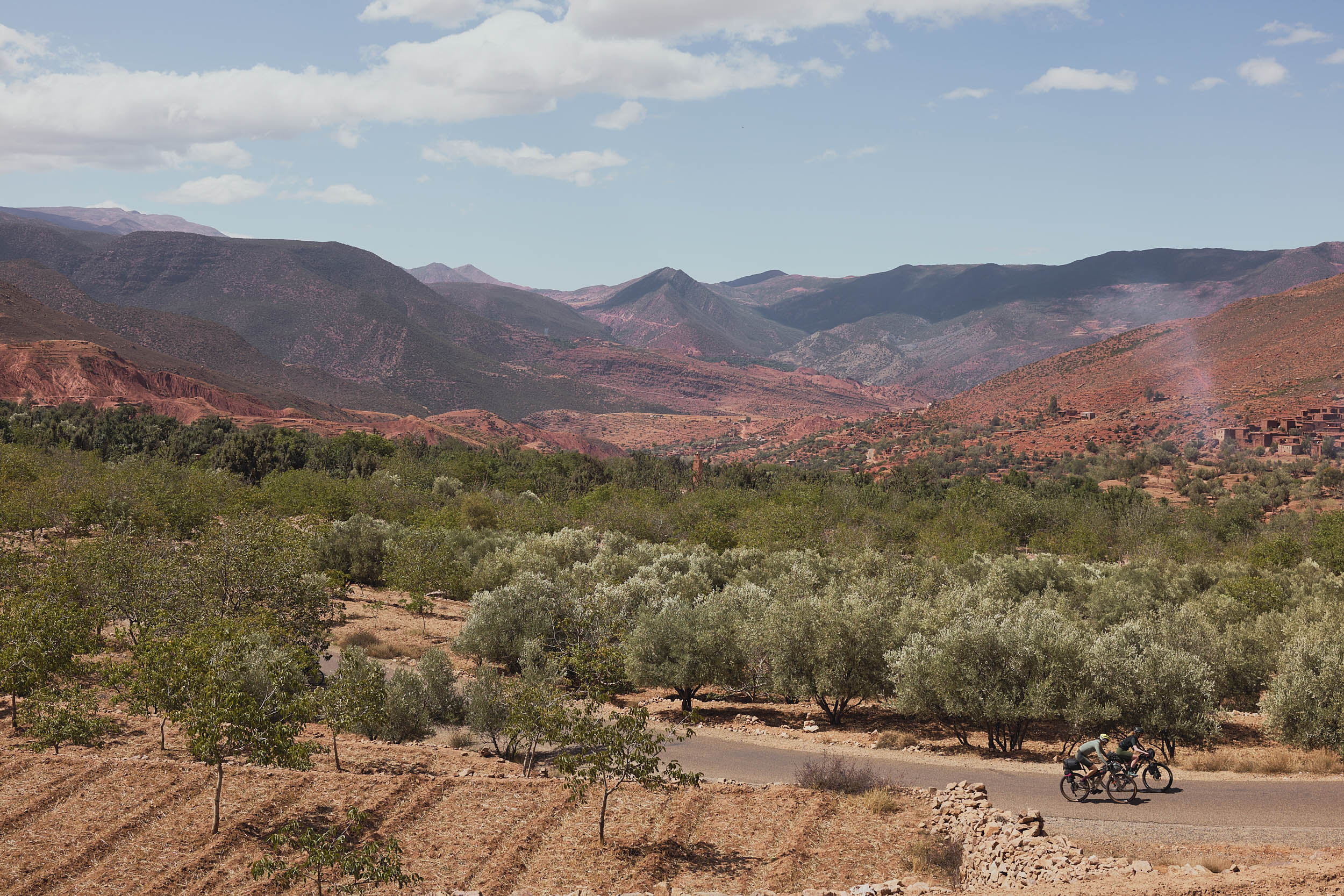
I was now 20 kilometres in to a particularly exposed section, and thoughts of what else could go wrong crept in: succumbing to the stomach cramps so many other riders had been suffering, a snapped chain, or maybe even a puncture. Then, as if by the will of the universe, my thoughts manifested one very squishy tyre. Fixing a puncture in the heat is frustrating not only due to the lack of shade but also because it turns your plugs to mush. Cutting them free from the plastic packing to which they’d become firmly attached felt like an involved surgery, and for the rest of the race, I was plagued by the thought of undergoing this procedure again. A handful of M&Ms and a dose of Chemical Brothers in my ears served as first aid to my soul, and I was rolling again, head-down, in time trial mode to a petrol station lunch stop of dreams.
Well-fed and bucked up with energy drinks, I cracked on and started the gradual 30-kilometre incline due west, following a blend of tarmac and gravel tracks winding up through a valley lined with small towns in the setting sun. It was beautiful, but a block headwind made it all last a little too long. For the first time, filling the pages of my mind’s sketchbook wasn’t enough to match up with how quickly my tank felt as though it was emptying. The wind was blowing away my wonder, and the noxious dust from a cement factory on the next climb knocked the wind from my lungs.
Tamskrout sat before a halfway point push to reach CP2. I’d hoped for a hotel, but the town was without a roof or bed, only a small cafe filled to the brim with football fans and other disappointed riders. As the temperature dropped, diminished spirits made plastic chairs feel more comfortable by the minute while metal omelette dishes bounced from kitchen to table. Four of us seized an offer of a floor to bed down on, and we took patchy sleep as others ventured out, watched by the twinkling eyes of local dogs. At 4 a.m., I rolled out to my own canine chorus. After what felt like an age in darkness, day finally broke four times with the undulations of the landscape, revealing more hazy scenes that I remembered being clear previously.
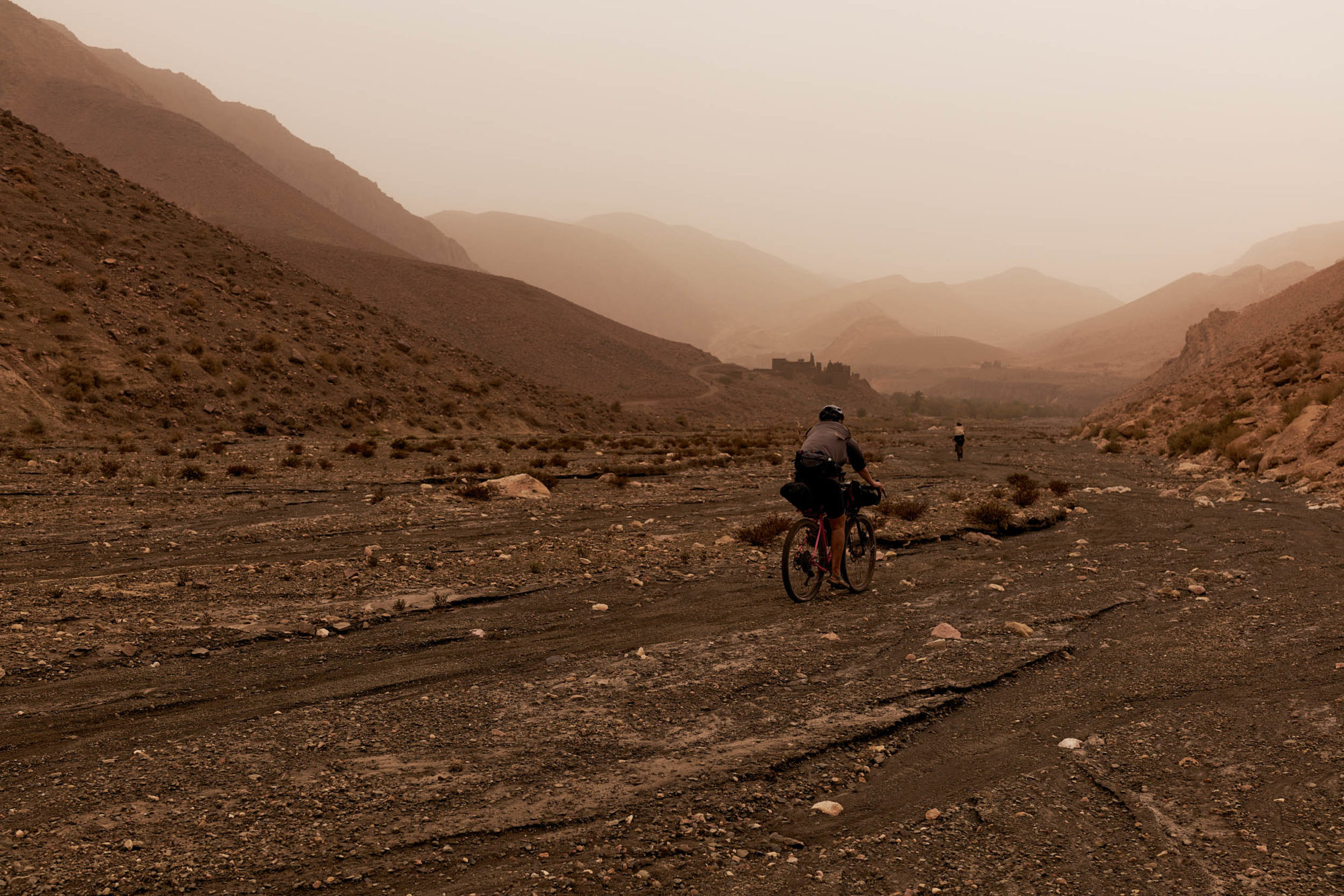
CP2 brought breakfast, a shower, and a change of fresh clothes. It spat me out onto a valley path made up of broken tracks and rough concrete switchbacks cut through rock down to an oasis with a canopy of palm fronds, the first natural shade from any kind of flora thus far. Rocky river beds and purple sand were up next—remote wonders painted with a palette that seemed like a result of dehydration-induced delirium.
With the midday heat closing in, little did I know that the risk of dehydration was becoming very real. I cracked the bottle on my bars and 1.5L of water was now more like 400ml, leaving me with just over 3L. For the first time, I felt scared of the remoteness of this unforgiving landscape. The last source of resupply for some time lay in a town at the gateway to an asphalt furnace—a vast expanse of remote desert with a single false flat tarmac highway through it—providing zero shelter and no breeze. I’d previously navigated it easily on a cool February night. The small kiosk was full of tinned fish but no water, and I reluctantly made do with 3L of unusually vibrant and sugary soda. Decanting bright yellow fizz into my bottles on the bike, I shared a few moments with the shopkeeper before unraveling more of the mystery of the desert.
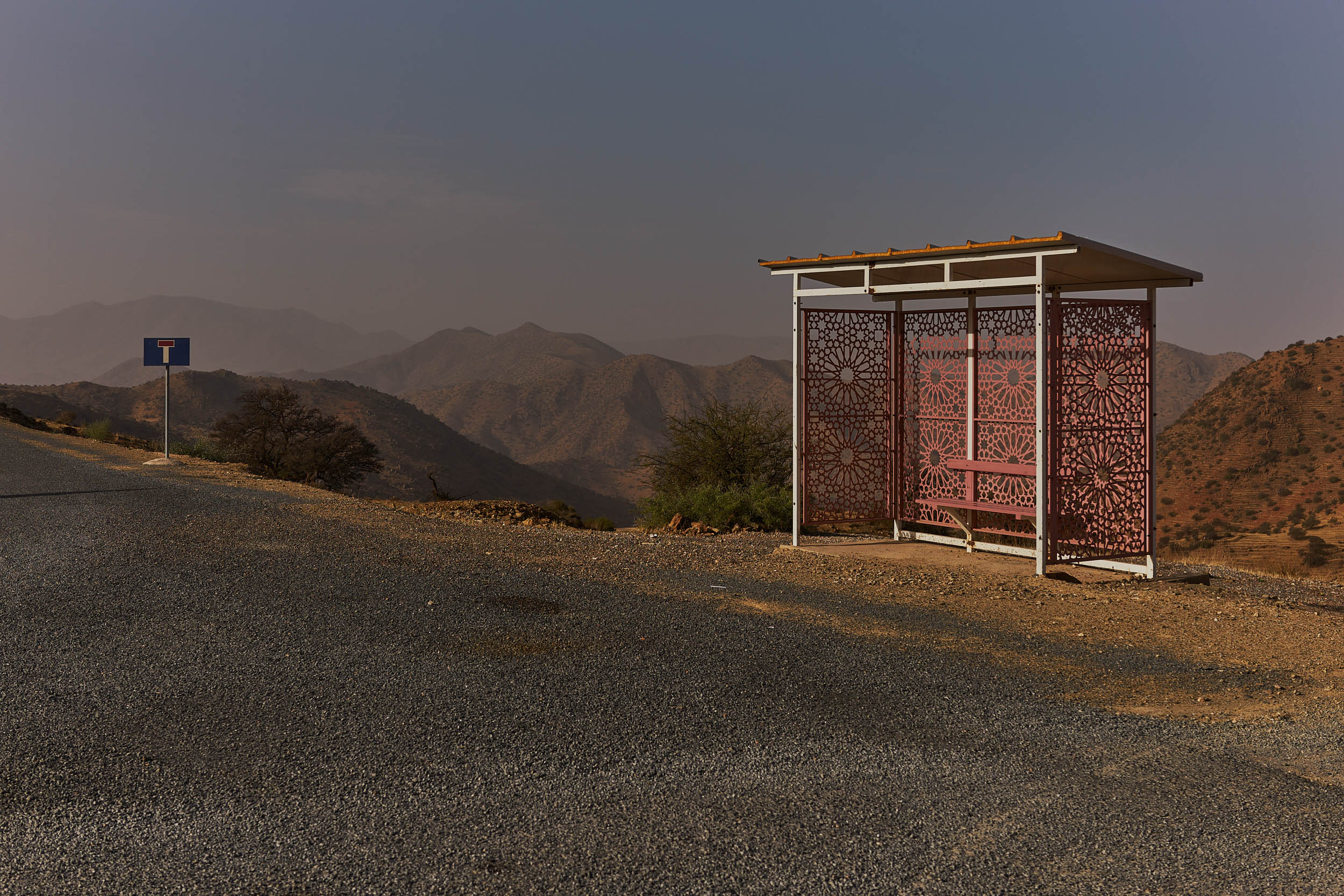
In the February darkness on this same tarmac, I had pondered what could be out of sight: cliffs, sculptures (unlikely, but one can dream), camels? Answer: roaming goats, distant peaks (no shortage of them), and one single building where Michael Gaffey and I hid from the sweltering heat at high noon. Thirty-nine degrees and no breeze was rough, and the now sun-mulled third-party cola was unpleasant but necessary.
A mountain ahead signalled the departure from this paved inferno, and after six straight, seemingly never-ending kilometres, the unexpected sight of plastic chairs brought pure elation. A cafe! Better still, water. And what’s even better than water to a cyclist? COFFEE. I climbed out of the town as the day drew to a close, light catching the buildings just so, colouring in more previously shaded memories. Thankfully, the light at close of day this time around kept the creepy crawlies of the night at bay, and no scuttling golden scorpions decided to cross my path.
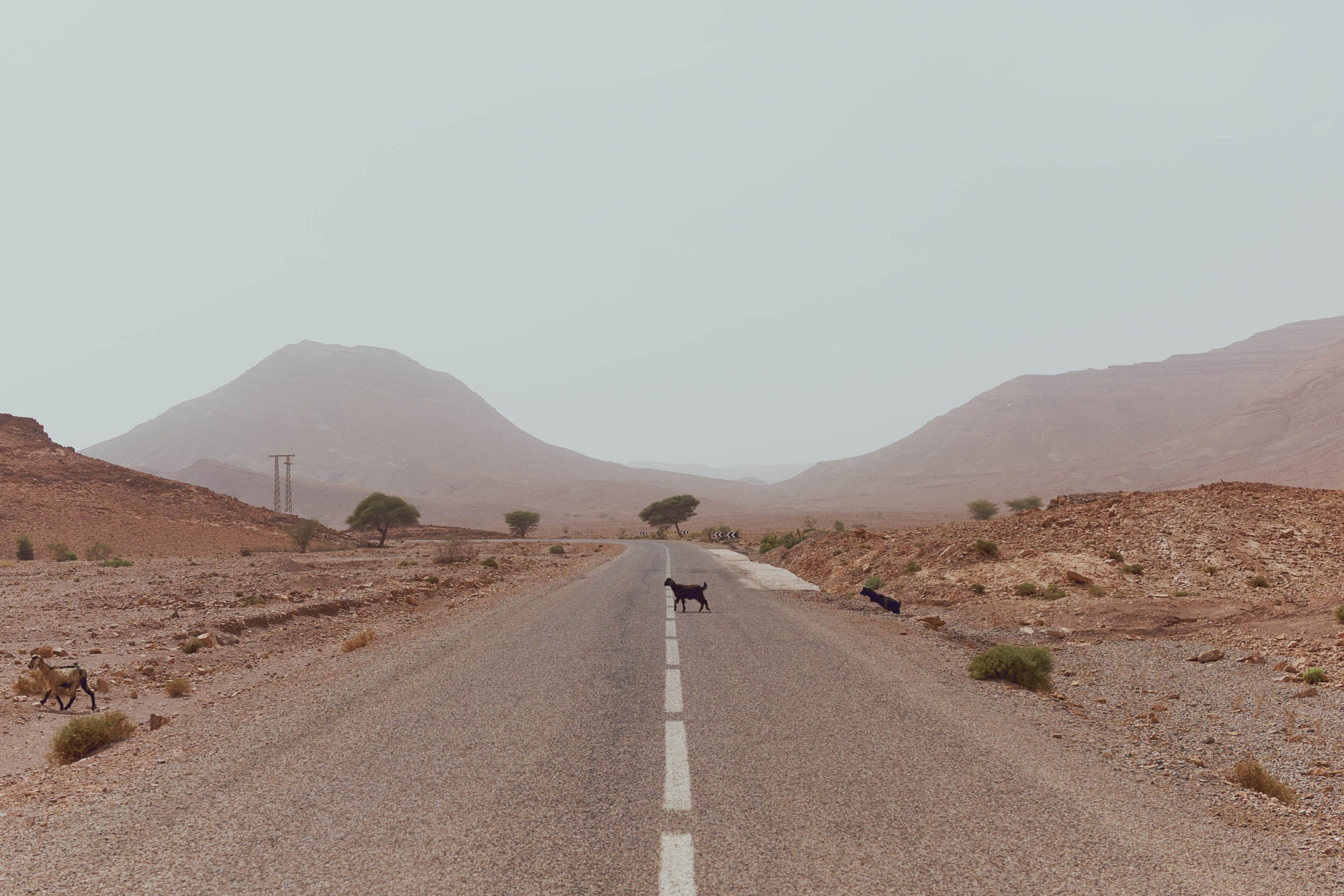
Of course, with light comes dark, and some of my vivid memories were given dark edges as I passed through places at night. I met the Old Colonial Road in shadow this time, and the years had been unkind to its surface, rendering it to rubble in places. My leapfrog pals were back, and Carl, Jade, and I hiked our way along the hard-going surface before laying out bivvies for the night.
By the morning, a group coalesced after summiting the Old Colonial Road, taking pause to talk, eat, and witness the dawning of the day before starting on the rugged trail down towards Issafen. It was a moment of levity that hushed the body’s groans after pushing up the last of the rough and long ascent.
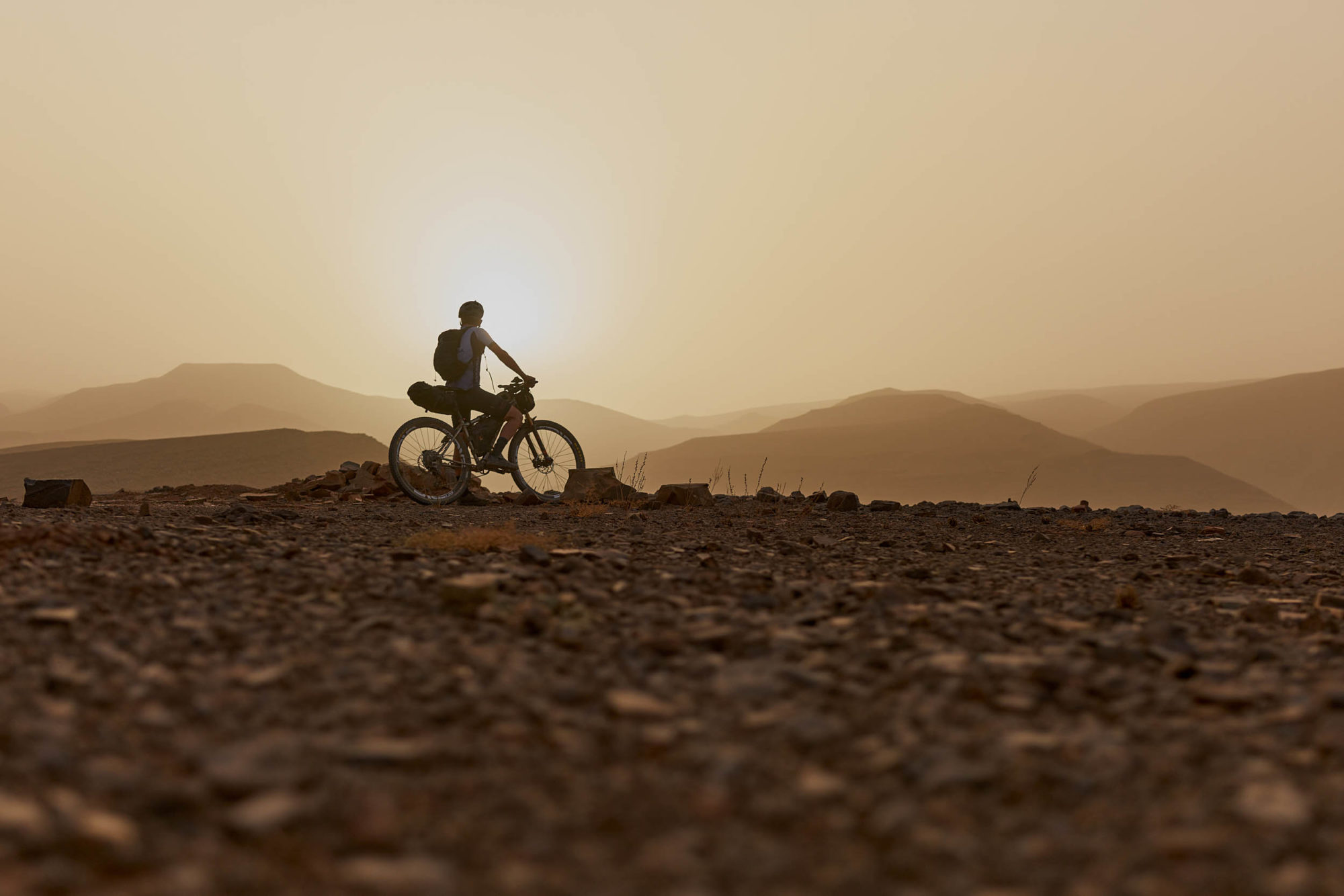
My biggest day awaited me en route to CP3, perforated by landscapes that had brought me outrageous joy the last time round: long, steep, and fast descents, countless twists and turns while hurtling down vast gravel roads, occasionally passing roaring trucks shifting heavy loads of aggregate. The thundering earth movers threw up clouds of white and grey dust in the cold night air, illuminated by pure white light. On this occasion, the sun illuminated every inch, rock, road sign, and peak; all that lay before me was perfectly visible.
Between the yelling, smiling, and wind in my hair, I made sure to relish the golden hour shift clocking in. This fresh interpretation of a place so familiar to all my senses bar sight was incredible, and even though some slivers of the full picture remained unseen so far, this was the high point of the whole race. I believed it couldn’t be topped, but as luck would have it, the cherry was placed on top just moments later. Cresting the last of the dusty hills under a murky, umber dusk, a crack in the cliffs gave way to a winding tarmac road, where the trucks poured down into the plateau some 500 metres below. I was riding on clouds made of rocks high above the stark sandy earth below—a waterfall of billowing stone.
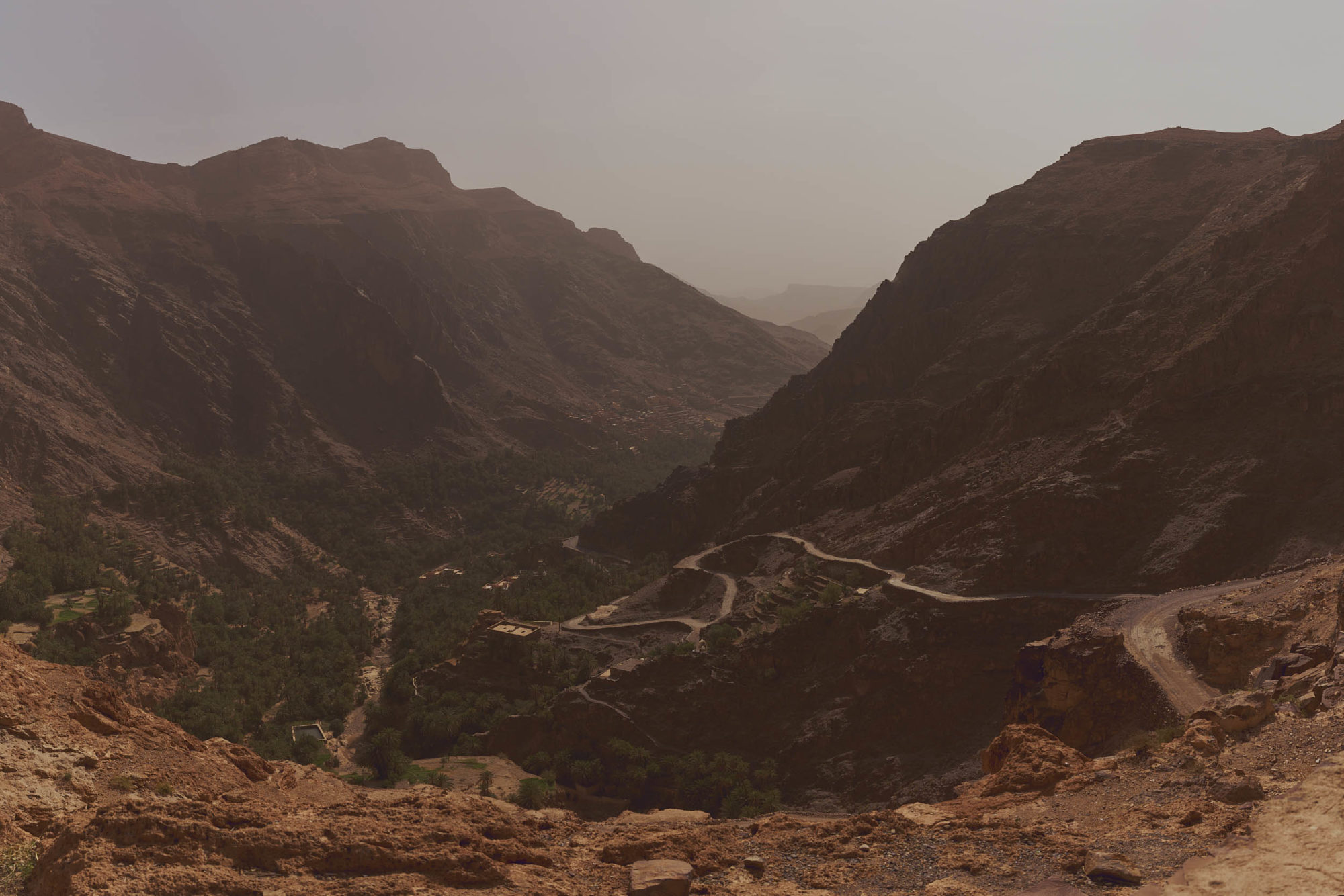
As night kicked into gear, my determination to make the final checkpoint kicked in as well, but not before a pause in the adrenaline of the evening, a moment to break bread with locals and other riders in the refuge of the last cafe serving omelettes and tea.
Squiggly lines in the night rose up before more fun tarmac descents resulted in a swift arrival at CP3 in Tafraout, waved down like planes coming into land by the Pikala staff managing the brevet cards and resupply. Dinner, naps, and breakfast were a given, but a vital top-up of some factor 50 sunscreen was essential while in town. The pharmacy didn’t open until 9 a.m., which meant I endured a lie in and lost time on the road to quite literally save my skin with the lowest elevation–200 metres above sea level–soon to come in the midday sun. Not only was it hot, but it was also slow. Another hike-a-bike section past mountain goats and their herders now bemusedly watching over me, a dopey human not sheltering under the trees away from the ruthless heat of the day. You know what they say about mad dogs and Englishmen.
From where I was walking, I noticed a few riders were pushing on up the switchbacks on the next cliff face. They briefly became targets to chase down and see me make swift progress up the piste, but it didn’t take long for the reality of riding in 43-degree heat to hit home. With little to no shade, I didn’t need any sort of device to tell me what the conditions were like. It was hot. So hot. As if all the moisture in my body leapt out in unison, sweat soaked my jersey and then quickly evaporated as if nothing had ever happened. After a few more strides, things started to mellow out, and it was time to ride for a short spell. This process would flip-flop for some time before reaching the last of the roughest sections and a moment where I could look back down on the valley that had scorched and drained me.
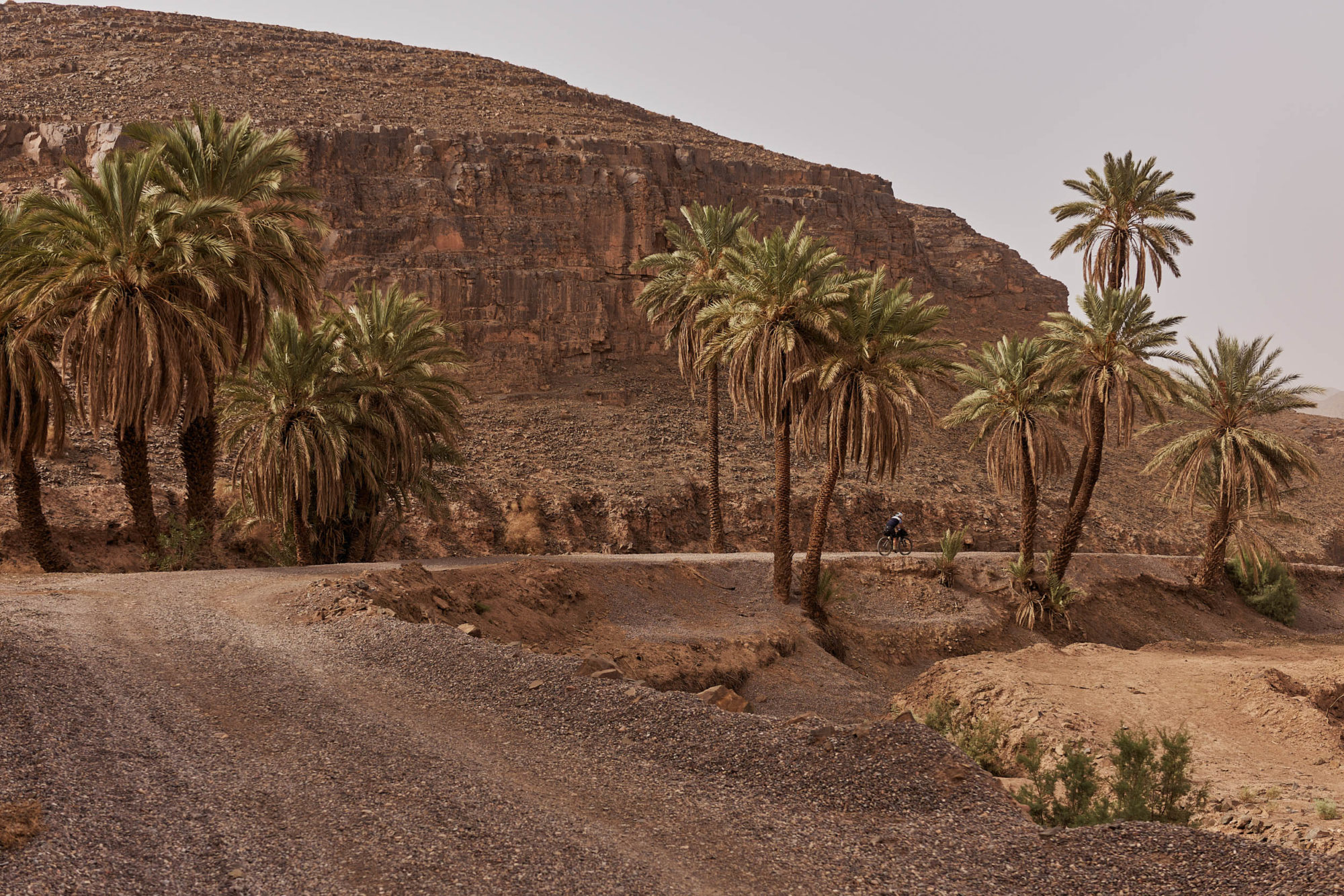
I again came to realise how lucky I was that the last time I traversed this section during the dead of night was a tactical win that came only through beginner’s luck. At least water here wasn’t a problem. I stocked up miles before and made sure to enjoy all of what I had with me, knowing that a town full of smiling faces, eager youths, and friendly shopkeepers wasn’t far away. A town where familiar faces were escaping the sun and enjoying the last major settlement before the road wound down a mountainside for the last time.
Safe in the knowledge there was a finite goal at the end of the day, the meals and moments of calm at high noon felt celebratory. The town was alive with smiles and rich in generosity, and all the energy that came with it felt as though the whole town was celebrating with me. A bounty of memories that I used as a superpower to keep my bike and body moving along the plateau towards the finish line in Agadir.
While rolling out, I paused on the edge of town to fix a slow puncture, and while fumbling with my pump and looking around, I recalled the completely contrasting sensations to the journey through the same place last time. Where dogs owned the night, waltzing over car bonnets and balconies, where I let my anxiety run riot over the possibility of the unknown, where my foolish preconceptions of the place had been all for nothing.
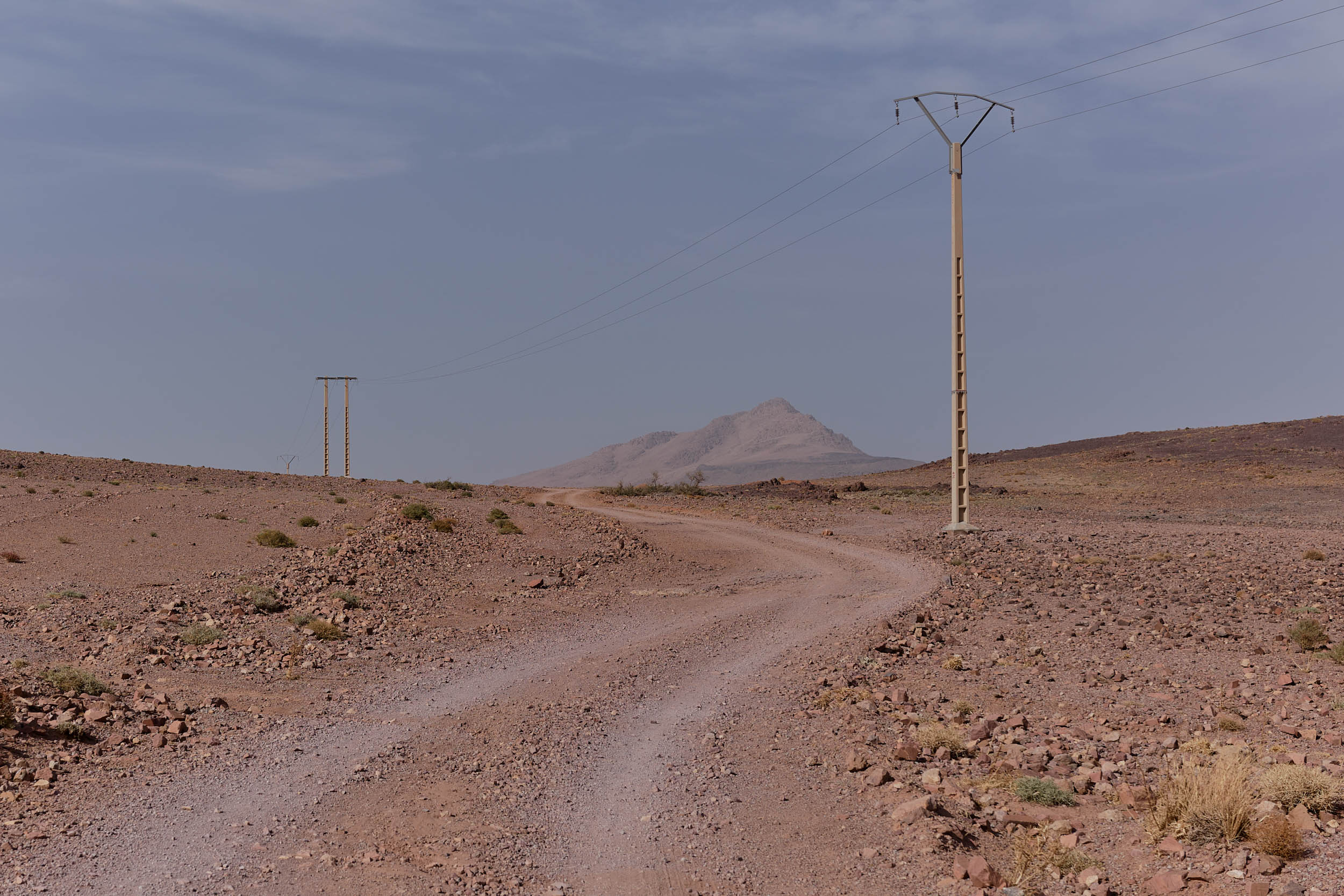
I rode this wave of satisfaction and realisation through dusk and beyond out into the long roads bordered by the first football pitches being used by local kids, the air filled with laughter and applause along with cheers of encouragement. If only it was feasible to bring along these cheerleaders for those final kilometres through sandy back alleys that cut through the vast argan orchards. All the while embracing the fact that each minute experienced under the fading light was offering me new strokes to that grander final image. As the sun petered out beyond my line of site, the distance to the end shrunk, time somehow stretched out ever longer, and my wheels sank ever deeper into the fine sand, my mind full of flashbacks to the same infuriation of battling against the same surface underneath the tread of my tyres first time round. I soon shook off all the negativity, lifting my chin up and getting my head down to make the finish line meet me that much sooner, the camera now firmly holstered away till that brevet card was stamped for the last time. Or so I thought.
Big city, bigger freezers, and to break up the monotony of the grind through sand and suburbia, one more petrol station became the final pit stop for the race and an opportunity to exercise a delicious bad habit cultivated during any and all bikepacking trips over the last few years—one I’m so very proud of and ideally would adhere to on a daily basis. The habit? Double dropping on the ice cream. Two Magnums, yes, please. It’s all about the ice cream, but through the whole race, I wasn’t offered an opportunity to enable this wonderful “problem” I’ve cultivated for myself. At least, not until I’d reached the fringes of Agadir.
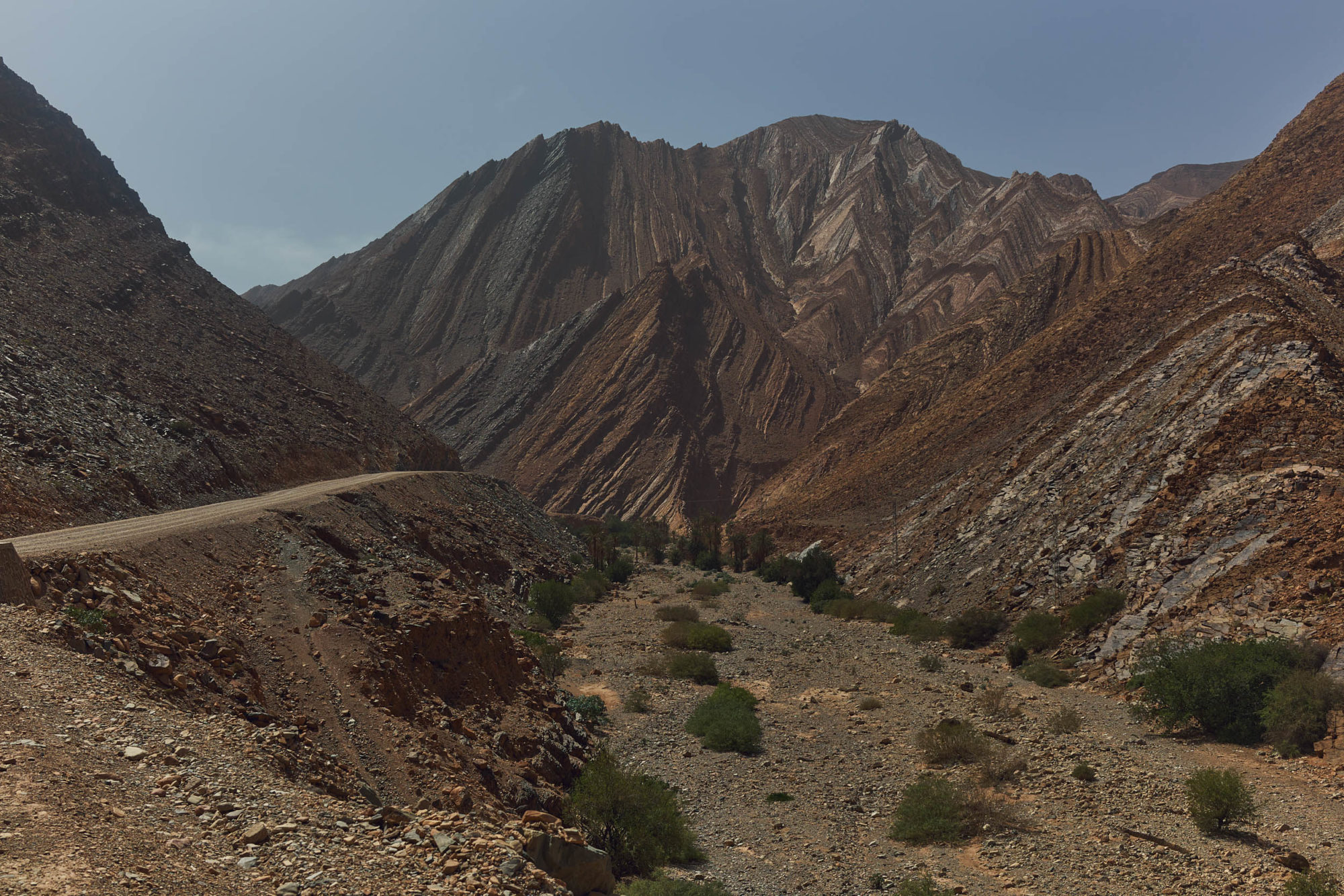
The cool sweetness was a contrast to the bittersweet nature of grinding through the warm night at the end of a monumental journey, and after carefully mulling over the options in the chest freezers on the petrol station forecourt, Duncan and I devoured two each before rolling into the finish line separated by just a few minutes. Greeted with a beer and a sigh of relief, my journey was over. I took in the surge of emotion and tiredness and let them settle, then lumbered my bike inside to the small nook behind the lobby where the brevet cards were stamped and a sofa full of friends, smiling faces, and a sense of home and belonging.
It was only after winding down and putting head to pillow that I got a chance to really evaluate if I got my carrot on the stick and how much of the full picture I had coloured in. More could always be done, more could be seen, but the satisfaction I got from unveiling the landmarks that had remained in shadow for nearly three years was wonderful.
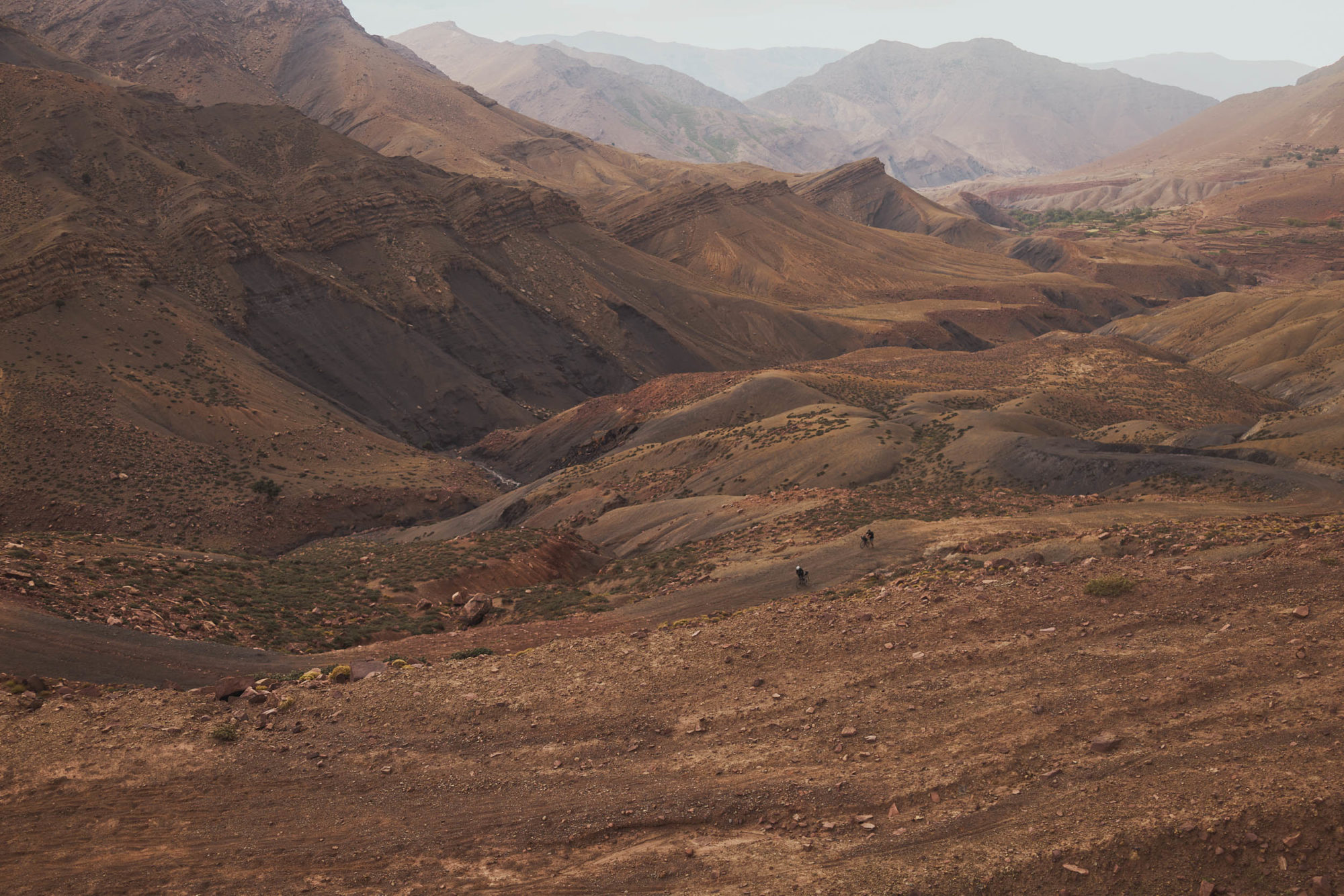
Witnessing these landscapes change in both form and character between day and night brought me a joy that allowed me to push on during the moments when I could hardly bring myself to turn the pedals. So, while the picture I’ve painted of the course in my mind isn’t officially complete, the experiences over the two races make it—and me—feel absolutely whole.
Related Content
Make sure to dig into these related articles for more info...
Please keep the conversation civil, constructive, and inclusive, or your comment will be removed.







